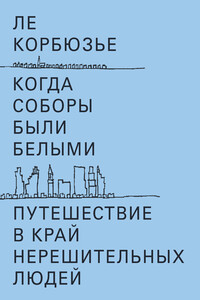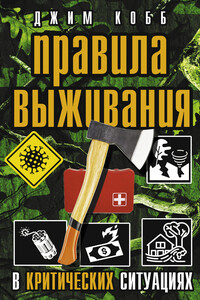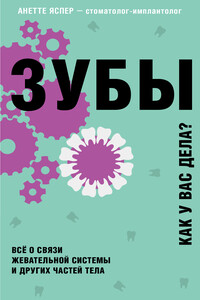Конец моды. Одежда и костюм в эпоху глобализации [заметки]
1
Žiźek S. Living in the End Times. London; New York: Verso, 2011. P. 480.
2
Danto A. After the End of Art: Contemporary Art and the Pale of History. New Jersey: Princeton University Press, 1997. P. 15.
3
Оскар Уайльд, цит. по: Stern R. Against Fashion: Clothing as Art, 1850–1930. Cambridge, MA: The MIT Press, 2004. P. 9.
4
Hoskins T. E. Stitched Up: The Anti-Capitalist Book of Fashion. London: Pluto Press, 2014. Pp. 160, 185–202.
5
Vinken B. Fashion Zeitgeist: Trends and Cycles in the Fashion System / Transl. M. Hewson. Oxford; New York: Berg, 2005. P. 63.
6
Agins T. The End of Fashion: The Mass Marketing of the Clothing Business. New York: William and Morrow, 1999. Pp. 280, 11.
7
Интервью с Тери Агинс, 8 марта 2017 года.
8
Fairs M. Interview with Li Edelkoort [интервью с Лидевью Эделькорт]. Dezeen. 2015. March 1. www.dezeen.com/2015/03/01/li-edelkoort-end-offashion-as-we-know-it-design-indaba-2015/ (по состоянию на 30.01.2017); Fairs M. Li Edelkoort Publishes Manifesto Explaining Why Fashion Is Obsolete // Dezeen. 2015. March 2. www.dezeen.com/2015/03/02/li-edelkoort-manifesto-anti-fashion-obsolete/ (по состоянию на 30.01.2017).
9
Melly G. Revolt into Style: The Pop Arts in Britain. London: Allen Lane The Penguin Press, 1970. P. 150.
10
Мэри Куант, цит. по: Steele Valerie. Women of Fashion. New York: Rizzoli, 1991. P. 134.
11
См.: Feldman Ch.J. We Are the Mods: A Transnational History of a Youth Subculture. New York: Peter Lang, 2009.
12
Ibid. Pp. 209–210.
13
Ibid. P. 212.
14
Menkes S. The New Speed of Fashion // T Magazine. 2013. August 23. www.nytimes.com/2013/08/23/t-magazine/thenew-speed-of-fashion.html (по состоянию на 30.01.2017).
15
Horyn C. Why Raf Simons Is Leaving Christian Dior // The Cut. 2015. October 22. nymag.com/thecut/2015/10/rafsimons-leaving-christian-dior.html (по состоянию на 30.01.2017).
16
Карл Лагерфельд, цит. по: WWD Overheated! // WWD. 2015. October 28. Pp. 50–59.
17
Ibid.
18
Csikszentmihalyi M. Creativity: Flow and the Psychology of Discovery and Invention. New York: Harper Perennial, 1996. Рр. 1, 31, 28.
19
Ibid. Рр. 8–9.
20
Ирис ван Херпен, цит. по: Quinn B. Fashion Futures. London: Merrell, 2012. P. 50.
21
Ирис ван Херпен, цит. по: Van Herpen I. Transforming Fashion. Groninger Museum and High Museum of Art, 2015. Без указания страниц.
22
Уилсон Э. Облаченные в мечты: мода и современность / Пер. Е. Демидовой, Е. Кардаш, Е. Ляминой. М.: Новое литературное обозрение, 2012. С. 221, 232, 223.
23
Там же. С. 233.
24
fashion after Fashion // Mad Museum. 2017. April 27. madmuseum.org/exhibition/fashion-after-fashion (по состоянию на 01.06.2017).
25
Deurell J., Eide H. (eds) Utopian Bodies – Fashion Looks Forward. Stockholm: Liljevalchs, 2015. P. 11.
26
Гегель Г. В. Ф. Лекции по эстетике // Эстетика: В 4 т. Т. 3. М.: Искусство, 1971. С. 136.
27
В более позднем эссе «Маркс и сыновья», в основу которого легли некоторые отклики на книгу «Призраки Маркса», Деррида пишет: «Итак, скольжение Маркса к марксизму, надо понимать, но, спросим: почему? кто представляет собой марксизм? Ахмад? Все те, делегатом которых он выступает? Но позвольте, даже в этой книге нет никакого согласия, никакого возможного единства между всеми „марксистами“, между всеми теми, кто называет себя или кого называют „марксистами“. Если же допустить, что в целом их всех можно определить как „марксистов“, то тогда окажется, что неопределяема как раз их индивидуальность. Я полагаю, что в этом нет ничего плохого, но, соответственно, апелляция к „марксистской“ идентичности становится тогда еще более неопределенной, чем всегда ( я несколько раз затрагивал эту тему и в Призраках Маркса)» (Деррида Ж. Маркс и сыновья / Пер. Д. Новикова. М.: Логос-альтера, Eccehomo, 2006. С. 26).
28
Деррида Ж. Призраки Маркса. Государство долга, работа скорби и новый интернационал / Пер. Б. Скуратова. М.: Logos-altera, Ecce Homo, 2006. С. 80.
29
Там же.
30
Там же.
31
Там же. С. 42–43.
32
Там же. С. 83.
33
Там же. С. 147.
34
Там же.
35
Evans C. Fashion at the Edge. New Haven, CT; London: Yale University Press, 2009. Pp. 249–250.
36
Thomas B. The New Historicism and Other Old-Fashioned Topics. New Jersey: Princeton University Press, 1991. P. 24.
37
Ibid. P. 24–25.
38
Леопарди Дж. Разговор Моды и Смерти // Нравственные очерки. Дневник размышлений. Мысли. М.: Республика, 2000. С. 36.
39
Benjamin W. Convolute B. 2,4 // The Arcades Project, third edition / Transl. H. Eiland, K. McLaughlin. Boston: Harvard University Press, 2000. B, 2,4.
40
Baudrillard J. Seduction. Trans. B. Singer. Montreal: New World Perspectives, Culture Text Series, 1991. P. 134. На русском языке: Бодрийяр Ж. Соблазн / Пер. А. Гараджи. М.: Ad Marginem, 2000.
41
Бодрийяр Ж. Мода, или Феерия кода // Символический обмен и смерть / Пер. С. Н. Зенкина. М.: Добросвет, 2000. С. 170.
42
Там же.
43
См. также: Geczy A., Karaminas V. Rei Kawakubo’s Deconstructivist Silhouette // Critical Fashion Practice. London; New York: Bloomsbury, 2017. Pp. 29–43.
44
Адорно Т. Критика культуры и общество. Пер. В. Котелевской. artguide.com/posts/1519 (по состоянию на 18.05.2019).
45
Kawamura Y. The Revolution in Paris Fashion. Oxford; New York: Berg, 2004. P. 138.
46
Пру А. Горбатая гора. Пер. Д. Гамазина. lib.ru/INPROZ/PRULKS_E/gora2.txt.
47
Зонтаг С. О фотографии / Пер. В. Голышева. М.: Ad Marginem, 2013.
48
Ash J. Memory and Objects // The Gendered Object / Еd. P. Kirkham. Manchester: Manchester University Press, 1996. Pp. 20–21.
49
Уилсон Э. Облаченные в мечты: мода и современность / Пер. Е. Демидовой, Е. Кардаш, Е. Ляминой. М.: Новое литературное обозрение, 2012. С. 18.
50
Адорно Т. Музей Валери-Пруста / Пер. С. Ромашко // Художественный журнал. 2012. № 88.
51
Там же.
52
Уилсон Э. Указ. соч. С. 18.
53
Диккенс Ч. Раздумья на Монмут-стрит / Пер. М. Лорие // Картинки с натуры // Собр. соч. в 30 томах. Т. 1. М.: Государственное издательство художественной литературы, 1957. charles-dickens.ru/books/item/f00/s00/z0000002/index.shtml.
54
Marc Jacobs says Fashion is not Art // Los Angeles Times. 2007. November 12. latimesblogs.latimes.com/alltherage/2007/11/marc-jacobs-say.html (accessed 23.09.2012).
55
Бодрийяр Ж. Мода, или Феерия кода. Указ. изд. С. 171.
56
Derrida J. Archive Fever: A Freudian Impression // Diacritis 25. 1995. No. 2. Summer. P. 9. На русский язык переведен лишь небольшой фрагмент этой книги – см. Градива: Вильгельм Йенсен, Зигмунд Фрейд, Карл Густав Юнг, Андре Бретон, Ролан Барт, Жак Деррида / Послесл. И. Соболевой. Б.м.: Salamandra P. V.V., 2012 (Прим. пер.).
57
Ibid.
58
Ibid.
59
Ibid.
60
Выражение «пространства моды» (fashionscapes) впервые употребила Вики Караминас в статье «Образ: пространства моды. К вопросу об исследовании медиатехнологий и их влияния на производство современных образов». См.: Гечи А., Караминас В. (ред.) Мода и искусство. М.: Новое литературное обозрение, 2015. С. 222–233.
61
Benjamin W. The Arcades Project. Cambridge, MA: Harvard University Press, 1999. P. 880.
62
Ibid. P. 423.
63
Appadurai A. Modernity at Large: Cultural Dimensions of Globalization. Minneapolis: University of Minnesota Press, 1996. P. 27.
64
Ibid. P. 31.
65
Беньямин В. Произведение искусства в эпоху его технической воспроизводимости // Беньямин В. Озарения. М.: Мартис, 2000. С. 122–152.
66
Андерсон Б. Воображаемые сообщества. Размышления об истоках и распространении национализма / Пер. В. Николаева. М.: Кучково поле, 2016.
67
Appadurai. Modernity at Large. P. 31.
68
Ibid. P. 32.
69
См.: Maffesoli M. The Time of the Tribes. The Decline of Individualism in Mass Society. London; Thousand Oaks; Delhi: Sage, 1996; Danesi M. La comunicazione al tempo di Internet. Bari: Progedit, 2013.
70
Appadurai. Modernity at Large. P. 33.
71
Ibid.
72
См.: Караминас В. Образ: пространства моды. К вопросу об исследовании медиатехнологий и их влияния на производство современных образов // Гечи А., Караминас В. (ред.) Мода и искусство. М.: Новое литературное обозрение, 2015. С. 222–233.
73
Calefato P. Mass moda. Linguaggio e immaginario del corpo rivestito. Genova: Costa & Nolan, 1996 (2nd edition, Roma: Meltemi, 2007).
74
Организацией и проведением конференции, которая прошла 8–9 декабря 2016 года в Колледже искусств Университета Мэсси (Новая Зеландия), занимались Вики Караминас и Хилари Раднер.
75
Barthes R. The Language of Fashion. Oxford: Berg Publishers, 2006. P. 41.
76
Ibid.
77
Appadurai. Modernity at Large. P. 71.
78
Ibid. P. 75.
79
Беньямин В. О понимании истории / Пер. Н. М. Берновской // Беньямин В. Озарения. М.: Мартис, 2000. С. 234.
80
Giannone A. La costruzione del senso filmico nell’abbigliamento e nel costume // Moda e cinema / Еd. P. Calefato. Genova: Costa & Nolan, 1999. P. 32.
81
Даббавалла. Википедия, свободная энциклопедия. ru.wikipedia.org/wiki/%D0%94%D0%B0%D0%B1%D0%B1%D0%B0%D0%B2%D0%B0%D0%BB%D0%B0.
82
Klein D., Fine M. Dabbawalla. Vimeo video, 3:51, posted by «The Perinnial Plate» (2013. February 28). vimeo.com/60748502.
83
Chow R. The Writing Voice in Cinema: A Preliminary Discussion // Locating the Voice in Film: Critical Approaches and Global Perspectives / Еds T. Whittaker, S. Wright. Oxford: Oxford University Press, 2017.
84
Calefato P. La moda oltre la moda. Milano: Lupetti, 2011. P. 138.
85
Filipinni R. Armani privé riscrive eleganza della geisha // ANSA. 2011. July 6. www.ansa.it/web/notizie/photostory/spettacolo/2011/07/06/visualizza_new.html_789622551.html.
86
Geisha o Dea // La Repubblica (last modified 2011. July 6). ricerca.repubblica.it/repubblica/archivio/repubblica/2011/07/06/geisha-dea.html.
87
Appadurai. Modernity at Large. Pp. 12–13.
88
Chow R. Ethics after Idealism. Theory, Culture, Ethnicity, Reading. Bloomington; Indianapolis: Indiana University Press, 1998. Pp. 74–97.
89
Morgado M. A. Fashion Phenomena and the Post-postmodern Condition: Enquiry and Speculation // Fashion, Style, & Popular Culture. 2014. 1, no. 3. Pp. 313–339; Featherstone M. Consumer Culture and Postmodernism. London: Sage Publications, 2007.
90
Lyotard J.-F. The Postmodern Condition: A Report on Knowledge / Transl. G. Bennington, B. Massumi. Manchester: Manchester University Press, 1991. P. 81.
91
Derrida J. A Derrida Reader: Between the Blinds / Еd. P. Kamuf. New York: Columbia University Press, 1991.
92
Reynolds J., Roffe J. Understanding Derrida. New York: Continuum, 2004. P. 46. Текст Деррида цит. по: Деррида Ж. Диссеминация / Пер. Д. Кралечкина. Екатеринбург: У-Фактория, 2007. С. 150.
93
Gill A. Deconstruction Fashion: The Making of Unfinished, Decomposing and Re-assembled Clothes // Fashion Theory: The Journal of Dress, Body & Culture. 1998. Vol. 2.1. Pp. 25–49; Granata F. Deconstruction Fashion: Carnival and the grotesque // Journal of Design History. 2012. 26, no. 2. Pp. 182–198; Zborowska A. Deconstruction in Contemporary Fashion Design: Analysis and critique // International Journal of Fashion Studies 2015. 2, no. 2. Pp. 185–201; Geczy A., Karaminas V. Critical Fashion Practice: From Westwood to van Beirendonck. New York; London: Bloomsbury, 2017.
94
Evans C. Fashion at the Edge. New Haven, CT; London: Yale University Press, 2003. Pp. 249–253.
95
Singer S. et al. Ciao, Milano! Vogue.com’s Editors Discuss the Week That Was // Vogue.com. 2016. September 25. www.vogue.com/article/milan-fashion-week-spring-2017-vogue-editors-chat (accessed 07.06.2017).
96
Stern C. A VERY stylish showdown! // The Daily Mail UK. 2016. September 27. www.dailymail.co.uk/femail/article-3809981/Astylish-showdown-Vogue-editors-aim-pathetic-bloggers-sit-row-Fashion-Weekscathing-article-branding-online-stars-desperate-embarrassing.html (accessed 07.06.2017).
97
Bubble S. 2016. September 26 (12:59 a.m.). Twitter post by @susiebubble: twitter.com/susiebubble/status/780315796107034624 (accessed 07.06.2017).
98
Термин, заимствованный из теории маркетинга: «influencer» (буквально «тот, кто влияет») – человек, чье мнение люди по той или иной причине считают значимым или авторитетным при совершении покупки.
99
Фидлер Ф. Портретная фотография. М.: Всесоюзное кооперативное издательство, 1960. С. 13.
100
Lasica J. D. Photographs That Lie: The Ethical Dilemma of Digital Retouching // State of the Art: Issues in Contemporary Mass Communication / Еds D. Shimkin, H. Stolerman, H. O’Connor. New York: St. Martin’s Press, 1992. Pp. 189–194.
101
Ibid. P. 190.
102
Ibid. P. 193.
103
Hoelzl I., Remi M. Soft Image: Towards a New Theory of Digital Image. Chicago: Intellect, 2015.
104
См., например: fotoforensics.com (по состоянию на 07.06.2017).
105
Vainshtein O. Digital Beauties: Strategies of Self-Presentation and Resistance // Beauty: Exploring Critical Perspectives / Еds P. Wilhelm, R. Nash. Oxford: Inter-Disciplinary Press, 2016. Pp. 81–93 (electronic book).
106
Ewen S. All-Consuming Images: Style in the New «Information Age» // State of the Art: Issues in Contemporary Mass Communication / Еds D. Shimkin, H. Stolerman, H. O’Connor. New York: St. Martin’s Press, 1992. P. 196.
107
Ibid. P. 196.
108
Ibid. P. 197.
109
Willis-Tropea L. Glamour Photography and the Institutionalization of Celebrity // Photography & Culture. 2011. 4, no. 3. Pp. 261–276. (Рус. пер.: Уиллис-Тропеа Л. Гламурная фотография и институциализация культуры cелебрити // Теория моды: одежда, тело, культура. 2015. № 35. С. 98–118.)
110
Барт Р. Орнаментальная кулинария // Барт Р. Мифологии. М.: Издательство им. Сабашниковых, 1996.
111
Paster G. K. The Body Embarrassed: Drama and the Disciplines of Shame in Early Modern England. Ithaca, NY: Cornell University Press, 1993. P. 25.
112
Ibid. P. 25.
113
Ibid. P. 23–64.
114
Vainshtein. Digital Beauties. Pp. 81–93.
115
Photoshop of Horrors // Jezebel, powered by Gizmodo Media Group, 2017. jezebel.com/tag/photoshop-of-horrors (accessed 07.06.2017).
116
What’s the Secret of My Beauty? Adobe Photoshop Day Cream – 25 after before Photos // Webneel. webneel.com/webneel/blog/whats-secret-my-beauty-photoshop-after (accessed 07.06.2017).
117
Coen J. Here Are the Unretouched Images from Lena Dunham’s Vogue Shoot // Jezebel. 2014. January 17. jezebel.com/here-are-the-unretouched-images-from-lena-dunhams-vogu-1503336657 (accessed 07.06.2017).
118
McCabe M., De Waal Malefyt T., Fabri A. Women, Makeup, and Authenticity: Negotiating Embodiment and Discourses of Beauty // Journal of Consumer Culture. Article first published online. 2017. October 16. doi.org/10.1177/1469540517736558 (accessed 09.12.2017).
119
Rizvi J. Will You Help Turn These Numbers Around? // Mamamia. 2013. August 18. www.mamamia.com.au/fernwood-bodyimage-survey/ (accessed 07.06.2017).
120
Ibid.
121
Zhang M. Kate Winslet’s Modeling Contract with L’Oréal Has a «No Photoshop» Clause // PetaPixel. 2016. October 24. petapixel.com/2015/10/24/kate-winslets-modeling-contract-with-loreal-has-a-nophotoshop-clause/ (accessed 07.06.2017).
122
Edwards S. New Photographs Show That Zendaya Was Heavily Photoshopped for Magazine Shoot // Jezebel. 2015. March 11. jezebel.com/new-photographs-show-that-zendaya-was-heavilyphotoshop-1740424576 (accessed 07.06.2017).
123
Truth in Advertising Act of 192014–H. R.4341, 113th Congress (2013–2014) // Library of Congress: www.congress.gov/bill/113thcongress/house-bill/4341 (accessed 07.06.2017).
124
Lubitz R. France passes law requiring companies to admit when models have been photoshopped // Mic Network Inc. 2017. mic.com/articles/130789/france-passes-law-requiring-companies-to-admit-whenmodels-have-been-photoshopped#.llGs9KeX3 (accessed 07.06.2017).
125
Willsher K. and agencies. Models in France must provide doctor’s note to Work // The Guardian AUS. 2015. December 18. www.theguardian.com/world/2015/dec/18/models-doctors-note-prove-not-too-thinfrance (accessed 07.06.2017).
126
Raw Beauty Talks: Help Us Create Positive Change for Young Women by Reducing Photoshop in Magazines // Change.org Inc. Last modified 2017. www.change.org/p/reduce-photoshop-in-magazines-to-create-abetter-world-for-girls (accessed 07.06.2017).
127
Blum J. Seventeen Magazine: Give Girls Images of Real Girls! // Change.org Inc. Last modified 2017. www.change.org/p/seventeenmagazine-give-girls-images-of-real-girls (accessed 07.06.2017).
128
Collins L. Pixel Perfect. Pascal Dangin’s Virtual Reality // The New Yorker. 2008. May 5. www.newyorker.com/magazine/2008/05/12/pixel-perfect (accessed 07.06.2017).
129
Matlins S. Ask Dove to Help Protect Our Children from Photoshopped Ads and Beauty // Change.org Inc. Last modified 2017. www.change.org/p/dove-make-real-beauty-more-real-and-sign-the-truth-in-advertisingheroes-pledge (accessed 08.06.2017).
130
Baudrillard J. Simulacra and Simulations // Modernism/Postmodernism / Ed. P. Brooker. London: Longman, 1992. Pp. 152–153.
131
Ibid. P. 156. Курсив мой. – О. В.
132
Ugrina L. Celebrity Biometrics: Norms, New Materialism, and the Agentic Body in Cosmetic Surgery Photography // Fashion Theory: The Journal of Dress, Body & Culture. 2014. Vol. 18.1. P. 35.
133
Zellweger R. We Can Do Better // Huffington Post. The blog. 2016. August 8. www.huffingtonpost.com/renee-zellweger/we-can-dobetter_b_11355000.html (accessed 08.06.2017).
134
Ugrina. Celebrity Biometrics. P. 36.
135
Стенвик Б. Все мы врем. Как ложь, жульничество и самообман делают нас людьми. М.: Альпина Паблишер, 2016. С. 370.
136
Yusoff K., Waterton C. Indeterminate Bodies // Body and Society. 2017. 3, no. 23. Pp. 3–22.
137
Беньямин В. Произведение искусства в эпоху его технической воспроизводимости. М.: Медиум, 1996.
138
Wilson E. Fashion and Postmodern Body // Chic Thrills: A Fashion Reader / Еds J. Ash, E. Wilson. Berkeley; Los Angeles: University of California Press, 1992. Pp. 3–17.
139
В 2013 году Дэвид Боуи выпустил песню The Stars Are Out Tonight, в которой обыгрывается тема андрогинности. В видеоклипе он снялся в компании Тильды Суинтон, Андрея Пежича и Саскии де Брау. См.: David Bowie: The Stars (Are Out Tonight) – YouTube Video, posted by DavidBowieVEVO. 2013. February 25. www.youtube.com/watch?v=gH7dMBcg-gE.
140
Gregory A. Has the Fashion Industry Reached a Transgender Turning Point? // Vogue. 2015. April 21. www.vogue.com/article/andreja-pejic-transgender-model (accessed 08.06.2017).
141
Whitelocks S. Blonde bombshell who cut off hair to work as male model reveals how she and her husband now get mistaken for a «gay couple» // The Daily Mail. 2013. October 30. www.dailymail.co.uk/femail/article-2480168/Elliott-Sailors-female-works-male-model-gets-mistaken-husbandgay-couple.html (accessed 08.06.2017).
142
Visual kei – направление в японской рок-музыке. Исполнители нередко культивируют насыщенную театральность, андрогинную образность, предпочитая зрелищные костюмы, пышные прически и подчеркнутый макияж.
143
Слово «иллюзия» происходит от латинского illusio – обман, заблуждение, но корень слова восходит к глаголу ludere – играть. Игра иллюзий занимала многие выдающиеся умы. Пример с оптической иллюзией «заяц или утка» подробно анализировал знаменитый мыслитель Людвиг Витгенштейн в своем труде «Философские исследования».
144
Udland M. The internet is losing its composure over this dress that might be white and gold or black and blue // Business Insider. 2015. February 26. www.businessinsider.com/white-and-gold-black-and-bluedress-2015-2 (accessed 08.06.2017).
145
Sample I. #TheDress: Have researchers solved the mystery of its colour? // The Guardian. 2015. May 14. Last modified 2017. February 22. www.theguardian.com/science/2015/may/14/thedress-have-researcherssolved-the-mystery-of-its-colour (accessed 08.06.2017).
146
Kooser A. Viral optical illusion asks if these legs are oiled or painted // CNET Magazine. 2016. October 26. www.cnet.com/news/viral-optical-illusion-legs-oily-paint-the-dress/ (accessed 08.06.2017).
147
Hunter. 2016. September 15. Instagram, posted by @Leonardhoespams. www.instagram.com/p/BKZAe_zgQYl/ (accessed 08.06.2017).
148
Derrida J. A Derrida Reader. P. 184.
149
DeMartini-Squires B. Now You See It: Disinformation and Disorientation on the Internet // A History of Visual Culture: Western Civilization from the 18th to the 21st Century / Еds J. Kromm, S. Benforado Bakewell. Oxford; New York: Berg, 2010. P. 341.
150
Например, в 2015 году в сфере селфи на смену модному ранее «утиному лицу» (duck face), когда губы вытягивались уточкой, пришел «рыбий зевок» (fish gulp – полуулыбка, приоткрывающая зубы).
151
Вайнштейн О. Everybody lies: фотошоп, мода и тело // Теория моды : одежда, тело, культура. 2017. № 43. С. 201–235.
152
Toth J. The passing of Postmodernism: A Spectroanalysis of the Contemporary. Albany, NY: SUNY Press, 2010.
153
Rojek Ch. Fame Attack: The Inflation of Celebrity and Its Consequences. London: Bloomsbury, 2013. P. 185.
154
См.: Church Gibson P. Fashion and Celebrity Culture. London: Berg, 2012; Чёрч Гибсон П. Порностиль: сексуальный костюм и раскол феминизма // Теория моды: одежда, тело, культура. 2014. № 34. С. 149–169.
155
См., например: Gledhill Ch. (ed.) Stardom: Industry of Desire. London: Psychology Press, 1991.
156
См.: Райан Н. Prada и искусство патронажа // Мода и искусство / Ред. Гечи А., Караминас В. М.: Новое литературное обозрение, 2015. С. 197–211; Schieren M., Sich A. (eds) Look at Me: Celebrity Culture at the Venice Art Biennale. Nuremberg: Verlag für Moderne Kunst, 2011.
157
См.: Braudy L. The Frenzy of Renown: Fame and Its History. Oxford: Oxford University Press, 1986.
158
См.: Rojek Ch. Celebrity. London: Reaktion, 2011. Чтобы получить подробное представление о его классификации знаменитостей, имеет смысл ознакомиться с первой частью этой книги полностью.
159
См., например: Turner G. Understanding Celebrity. London: Sage, 2004; Marshall D. Celebrity and Power: Fame in Contemporary Culture. Minneapolis: University of Minnesota Press, 1997; Cashmore E. Celebrity Culture. London: Routledge, 2006.
160
Enzensberger H. M. Constituents of a Theory of the Media // New Left Review. 1970. November – December. 1, no. 64. Pp. 13–36.
161
Беньямин В. Произведение искусства в эпоху его технической воспроизводимости // Беньямин В. Озарения. М.: Мартис, 2000. С. 122–152.
162
Jenkins H. Convergence Culture: Where Old and New Media Collide. New York: New York University Press, 2006.
163
Enzensberger. Theory of the Media. P. 25.
164
Ibid. Энценсбергер цитирует Лефевра.
165
Ibid.
166
Ibid. P. 14.
167
Ibid.
168
Ibid. P. 16.
169
Crewe L. The Geographies of Fashion. London: Bloomsbury, 2017. Pp. 37–65; см. также: Hoskins. Stitched Up.
170
Немногочисленные работы по теории моды, в которых рассматривается производство: Entwistle J. The Aesthetic Economy of Fashion: Markets and Value in Clothing and Modelling. Oxford: Berg, 2009; Edwards T. Fashion in Focus: Concepts and Practices. London: Routledge, 2011. См. убедительный анализ смежной темы: Briggs A. Capitalism’s Favourite Child // Fashion Cultures Revisited: Theories, Explorations and Analysis / Eds S. Bruzzi, P. Church Gibson. London: Routledge, 2013.
171
О «просачивании» моды «сверху вниз» первым заговорил Торстейн Веблен в своей известной работе «Теория праздного класса» (The Theory of the Leisure Class), которая впервые была напечатана в 1899 году и с тех пор постоянно переиздавалась. Эта теория связана также со значимым эссе Георга Зиммеля «Мода», опубликованным спустя долгое время после смерти автора: см.: The American Journal of Sociology. 1957. May. 62. No. 6. Pp. 541–558. Сам Зиммель во многом опирался на труды континентальных исследователей в других научных областях, в том числе и социолога Эмиля Дюркгейма.
172
О моде, идущей «снизу вверх», первым, вероятно, сказал антрополог Тед Полемус, чья книга вышла в 1994 году в издательстве Thames and Hudson одновременно с выставкой «Уличная мода: с улицы на подиум» (Streetstyle: From Sidewalk to Catwalk), проходившей в музее Виктории и Альберта в Лондоне.
173
По-видимому, в печати этот термин впервые использован в книге: Agins T. The End of Fashion. London: HarperCollins, 1999.
174
Лидевью Эделькорт, публикующая прогнозы, которые пользуются авторитетом в мире моды, в июле 2015 года издала эссе под названием «Антимода: манифест нового десятилетия» (Anti-Fashion: A Manifesto for the Next Decade); выпустило эссе основанное ею в Париже агентство Trend Union.
175
Уилсон Э. Облаченные в мечты: мода и современность / Пер. Е. Демидовой, Е. Кардаш, Е. Ляминой. М.: Новое литературное обозрение, 2012. С. 20.
176
См.: Чёрч Гибсон П. Указ. соч.
177
Там же.
178
Там же.
179
Sastre A. Hottentot in the Age of Reality TV: Sexuality, Race and Kim Kardashian’s Visible Body // Celebrity Studies. 2013. August. 5. No. 1–2. Pp. 123–137.
180
См.: Rojek. Celebrity.
181
В июльском номере Vanity Fair (США) за 2015 год Дженнер впервые предстал как Кейтлин – и на обложке, и в пространной статье, написанной Баззом Биссингером.
182
См.: Hunt E. Essena O’Neill Quits Instagram // The Guardian. 2015. November 3.
183
Ibid.
184
См.: De Klerk A. Kardashians to Blame // Harper’s Bazaar (UK). 2017. March 31; May 26. www.harpersbazaar.co.uk/beauty/news/a40729/kardashians-to-blame-for-the-number-of-millennial-women-getting-cosmeticprocedures/.
185
См. онлайн-версию Harper’s Bazaar: Kamali S. 2017. March 17.
186
«Форсаж» – серия фильмов в жанре экшен, одна из самых успешных за всю историю кино. Дуэйн Джонсон вошел в состав съемочной группы в 2011 году.
187
Kamali. Harper’s Bazaar. 2017.
188
Рекламу Pepsi-Cola, которую изъяли из Сети через сутки, вполне справедливо критиковали за то, что в ней за счет определенного набора образов протестные движения, такие как Black Lives Matter и женские марши против Трампа, выглядят как нечто тривиальное. Шум вокруг нее еще более усилился, когда Pepsi-Cola принесла извинения Кендалл Дженнер за то, что привлекла ее к этому проекту.
189
См. интервью с Риккардо Тиши: Ginsberg M. Prêt-a-Reporter // The Hollywood Reporter. 2015. March 18; 2017. June 26. www.hollywoodreporter.com/news/givenchys-riccardo-tisci-why-he-782524.
190
Cartner-Morley J. Oliver Rousteing on Rihanna, Kim Kardashian and the Balmain Army // The Guardian. 2016. September 15.
191
О взаимоотношениях теории моды и более традиционных научных дисциплин лучше всего написала в своем эссе Валери Стил: The F Word // Lingua Franca. 1991. April. Pp. 17–20.
192
Rojek. Fame Attack. P. 185.
193
Marshall. Celebrity and Power.
194
Schieren, Sich. Look at Me.
195
См., в частности, посвященную Бикрофт статью: Johnstone N. Dare to Bare // The Observer. 2005. March 13.
196
Документальный фильм «Художница и суданские близнецы» (The Art Star and the Sudanese Twins) сняла Пьетра Бреткелли, первый показ состоялся в рамках кинофестиваля Sundance в 2008 году.
197
Автор сборника фотографий под названием Selfish (в оригинале обыгрывается созвучие слов «selfish», «эгоистичный», и «selfie», «селфи», поэтому название можно перевести и как «Эгоистка», и как «Альбом селфи») – Ким Кардашьян-Уэст; книга была опубликована издательством Rizzoli (Нью-Йорк) в мае 2015 года.
198
W Magazine. The Art Issue. 2010. November.
199
Paper magazine. 2014. Winter. Break the Internet [обложка и статья].
200
См., например: Thornton S. Seven Days in the Art World. London: Granta, 2008.
201
Речь идет о фильме «Однажды» (Once Upon a Time), который Карл Лагерфельд снял для модного дома Chanel в 2013 году.
202
Vogue (US). 2014. April. Фотография Уэста и Кардашьян для обложки сделана Анни Лейбовиц.
203
Baird-Murray K. Whatever Happened to the Cleavage? // Vogue (UK). 2016. December.
204
Medine L. Confession: I Don’t Get Vetements // Man Repeller. 2016. March 30. www.manrepeller.com/2016/03/confession-i-dontget-vetements.html.
205
Ibid. 2017. January 27.
206
Cartner-Morley J. What I Wore This Week // The Guardian. 2017. March 24.
207
Bordo S. Unbearable Weight: Feminism, Western Culture and the Body. Oakland: University of California Press, 1993.
208
Фуко М. Надзирать и наказывать. Рождение тюрьмы. М.: Ad Marginem, 1999.
209
Там же.
210
De Klerk. Kardashians to Blame.
211
Ibid.
212
Ibid.
213
Ibid.
214
Wolf N. Emily Ratajowski’s Naked Ambition // Harper’s Bazaar. 2016. July 7.
215
Lynskey D. Blurred Lines: The Most Controversial Song of the Decade // The Guardian. 2013. November 14.
216
Ibid.
217
«Исчезнувшая» (Gone Girl). Режиссер – Дэвид Финчер, продюсер – Арнон Милчен. США, 20th Century Fox, 2014.
218
Вульф Н. Миф о красоте. Стереотипы против женщин. М.: Альпина нон-фикшн, 2018.
219
См., например: Meikle J. Growing Number of Girls Suffer Low Self-esteem, Says Report // The Guardian. 2013. November 29. NYC Girls Project (онлайн), 2017.
220
Дебор Г.-Э. Общество спектакля / Пер. Б. Немана: avtonom.org/old/lib/theory/debord/society_of_spectacle.html?q=lib/theory/debord/society_of_spectacle.html.
221
См.: Веблен Т. Теория праздного класса / Пер. С. Г. Сорокиной. М.: Прогресс, 1984.
222
Работы представителей Франкфуртской школы обладают в современной культурологии значительным авторитетом. Это направление сформировалось в 1930‐е годы в Германии; среди тех, кто к нему относился, наиболее известны Теодор Адорно, Макс Хоркхаймер и Герберт Маркузе.
223
Бодрийяр Ж. Симулякры и симуляции / Пер. А. Качалова. М.: Издательский дом «ПОСТУМ», 2018.
224
Enzensberger. Theory of the Media.
225
См., например: Klein N. This Changes Everything: Capitalism vs. the Climate. London: Penguin, 2015; Stree W. How Will Capitalism End?: Essay on a Failing System. London: Verso, 2016; Berardi F. After the Future. Oakland; Baltimore: AK Press, 2011.
226
Berardi. After the Future.
227
Ibid. Р. 137.
228
Ibid. Р. 136.
229
Ibid.
230
Некоторые из материалов, вошедших в эту главу, в различных формах фигурировали в следующих публикациях: Radner H. An Elegy for Cinema // Bellour Raymond: Cinema and the Moving Image, eds H. Radner, A. Fox. Edinburgh: Edinburgh University Press, 2018. Pp. 70–87; Radner H. Transnational Celebrity and the Fashion Icon: The Case of Tilda Swinton, «Visual Performance Artist at Large» // European Journal of Women’s Studies. 2016. 23, no. 4. Pp. 401–414; Radner H. The Ghost of Cultures Past: Fashion, Hollywood and the End of Everything // Film, Fashion and Consumption. 2014. 3, no. 2. Pp. 83–91.
231
В тех случаях, где не оговорен какой-то иной смысл, говоря о моде, я буду иметь в виду одежду, в том числе обувь, головные уборы, украшения и другие декоративные аксессуары, а не само по себе явление, в рамках которого жизнь в тот или иной период регламентируется различными практиками, сменяющимися на протяжении времени с различной скоростью под воздействием социальных и экономических факторов.
232
Gamber W. The Female Economy: The Millinery and Dressmaking Trades, 1860–1930. Urbana: University of Illinois Press, 1997.
233
Church Gibson P. Fashion and Celebrity Culture. London: Berg, 2012. Pp. 53–66; Stokes M. Female Audiences of the 1920s and Early 1930s // Identifying Hollywood’s Audiences: Cultural Identity and Movies / Еds M. Stokes, R. Maltby. London: BFI, 1999. Pp. 42–60.
234
Polhemus T. Street Style: From Sidewalk to Catwalk. New York: Thames and Hudson, 1994.
235
Radner H. Migration and Immigration: French Fashion and American Film // France/Hollywood: Échanges cinématographiques et identités nationales / Еds M. Barnier, R. Moine. Paris: L’Harmattan, 2002. Pp. 210–211.
236
Bellour R. Le spectateur du cinéma // Trafic. 2011. 79. Pp. 32–44; Bruno G. Cultural Cartography, Materiality and the Fashioning of Emotion // Visual Cultural Studies / Еd. M. Smith. Los Angeles; London: Sage, 2008. Pp. 144–166; Casetti F. Sutured Reality: Film, from Photographic to Digital // October. 2011. 138. Pp. 95–106; Lewis J. (ed.) The End of Cinema as We Know It. New York: New York University Press, 2001; O’Regan T. The End of Cinema? The Return of Cinema? // Metro Magazine: Media and Education Magazine. 2001. 124, no. 125. Pp. 64–72, 74–76.
237
Agins T. The End of Fashion: How Marketing Changed the Clothing Business Forever. New York: HarperCollins, 2000 [Kindle Edition]; Vinken B. Fashion Zeitgeist: Trends and Cycles in the Fashion System. Oxford: Berg, 2005.
238
Vinken. Fashion Zeitgeist. P. 3.
239
Hansen M. Cinema and Experience: Siegfried Kracauer, Walter Benjamin, and Theodor W. Adorno. Berkeley: University of California Press, 2011.
240
Entwistle J. The Fashioned Body: Fashion, Dress and Modern Social Theory. Cambridge: Polity Press, 2000. P. 7.
241
Bruno. Cultural Cartography. P. 147.
242
См.: Bellour R. Querelle // La querelle des dispositifs / Еd. R. Bellour. Paris: P. O.L., 2011. Pp. 13–47; см. также Casetti F. The Lumière Galaxy: Seven Key Words for the Cinema to Come. New York: Columbia University Press, 2015.
243
Кэмпбелл Уокер, из личной беседы. 7 ноября 2014 года. См. также: Quandt J. Everyone I Know Is Staying Home: The New Cinephilia // Framework: The Journal of Cinema and Media. 2009. 50. Pp. 206–209; Shambu G. The New Cinephilia. Montreal: Caboose, 2014.
244
Polhemus. Street Style. P. 12.
245
Джудит Йе, из личной беседы. 29 октября 2014 года. За последний годы бренд Judith Yeh стал гораздо более заметным благодаря таким медийным формам, как Instagram и Pinterest.
246
Cline E. The Shockingly High Cost of Cheap Fashion. New York; London: Penguin, 2013 [Kindle Edition].
247
Rocamora A. New Fashion Times: Fashion and Digital Media // The Handbook of Fashion Studies / Еds S. Black, A. De La Haye, J. Entwistle, A. Rocamora, R. Root, H. Thomas. London: Bloomsbury Press, 2013. Pp. 61–76.
248
Cline. The Shockingly High Cost of Cheap Fashion.
249
См., например: Agins. The End of Fashion [location 188 of 6227].
250
Odin R. The Amateur in Cinema, in France, since 1990: Definitions, Issues and Trends // A Companion to Contemporary French Cinema / Еds A. Fox, M. Marie, R. Moine, H. Radner. Malden, MA: John Wiley and Sons, 2015. Pp. 590–611.
251
Bellour. Le spectateur de cinéma.
252
Schatz T. The New Hollywood // Film Theory Goes to the Movies / Еds J. Collins, H. Radner, A. Preacher Collins. New York: Routledge, 1993. Pp. 8–36.
253
Church Gibson. Fashion and Celebrity Culture. P. 11.
254
Rocamora A. How New Are the New Media? The Case of Fashion Blogs // Fashion Media: Past and Present / Еds D. Bartlett, Sh. Cole, A. Rocamora. London; New York: Bloomsbury, 2013. Pp. 155–164; Colman F. Rhizome // The Deleuze Dictionary, Revised Edition / Еd. A. Parr. Edinburgh: Edinburgh University Press, 2010. Pp. 232–235; Делёз Ж., Гваттари Ф. Тысяча плато. Капитализм и шизофрения. Екатеринбург: У-Фактория; М.: Астрель, 2010; Radner H. «This Time’s for Me»: Making Up and Feminine Practice // Cultural Studies. 3, no. 3. Pp. 301–322 [doi:10.1080/09502388900490211].
255
Mendes V., De La Haye A. 20th Century Fashion. London; New York: Thames and Hudson, 1999. P. 194.
256
Irvine S. The Mysterious Cristóbal Balenciaga // fashion.telegraph.co.uk. 2013. September 3. fashion.telegraph.co.uk/newsfeatures/TMG10275681/The-mysterious-Cristobal-Balenciaga.html (accessed 10.05.2017).
257
Church Gibson. Fashion and Celebrity Culture; Agins T. Hijacking the Runway: How Celebrities Are Stealing the Spotlight from Fashion Designers. New York: Gotham Books, 2014 [Kindle Edition].
258
Vincendeau G. Hot Couture: Brigitte Bardot’s Fashion Revolution // Fashioning Film Stars / Еd. R. Mosely. London: BFI, 2005. P. 137; Church Gibson. Fashion and Celebrity Culture. P. 55.
259
Church Gibson. Fashion and Celebrity Culture; Agins. Hijacking the Runway.
260
Agins. Hijacking the Runway [location 223 of 5463].
261
Ibid.
262
Bruzzi S., Church Gibson P. Introduction // Fashion Cultures Revisited / Еds S. Bruzzi, P. Church Gibson. London; New York: Routledge, 2013. P. 5.
263
Rick Owens // en.vogue.fr. Updated 2015. November 24. en.vogue.fr/vogue-list/the voguelist/rick-owens/1088 (accessed 10.05.2017).
264
Цит. по: Shackleton H. step inside rick owens’ world // i-D. 2008. April. Рosted 2014. November 10. i-d.vice.com/en_au/article/8xna55/step-inside-rick-owens39-world-aunz-translation (accessed 21. 03.2018).
265
La Ferla R. Imitate That Zipper // New York Times. 2009. September 2. www.nytimes.com/2009/09/03/fashion/03OWENS.html?pagewanted=all&_r=0 (accessed 10.05.2017).
266
Fury A. The Lighter Side of Rick Owens // T: The New York Times Style Magazine, nytimes.com. 2017. March 2. www.nytimes.com/2017/03/02/t-magazine/rick-owens-fashion-designer.html?_r=0 (accessed 10.05.2017).
267
English B. A Cultural History of Fashion in the 20th and 21st Centuries: From Catwalk to the Sidewalk. London; New York: Bloomsbury Academic, 2013 [Kindle Edition, location 420 of 6620].
268
Ibid. Location 268 of 6620.
269
Vinken. Fashion Zeitgeist. P. 35.
270
Ibid. Р. 63.
271
Agins. The End of Fashion [location 170 of 6227].
272
Geczy A., Karaminas V. Fashion’s Double: Representations of Fashion in Painting, Photography and Film. London; New York: Bloomsbury, 2016. P. 123.
273
Караминас В. Образ: пространства моды. К вопросу об исследовании медиатехнологий и их влияния на производство современных образов // Гечи А., Караминас В. (ред.) Мода и искусство. М.: Новое литературное обозрение, 2015. С. 222–233.
274
Church Gibson. Fashion and Celebrity Culture. P. 55.
275
Wollen P. The Concept of Fashion in the Arcades Project // boundary 2. 2003. 30, no. 1. P. 142.
276
Lindsay V. The Art of the Moving Picture. New York: The Macmillan Company, 1916.
277
Об отношении к массовой культуре см.: Brantlinger P. Bread and Circuses: Theories of Mass Culture as Social Decay. Ithaca, NY: Cornell University Press, 1983.
278
Gunew S. Personal Costs: What Counts as Political? Лекция, прочитанная в Отагском университете (Данидин, Новая Зеландия). 28 сентября 2015 года.
279
Бергер Дж. Искусство видеть / Пер. Е. Шраги. СПб.: Клаудберри, 2012. С. 55.
280
Flügel J. C. The Psychology of Clothes. London: Hogarth Press, 1930. P. 208. См. пример современного употребления: Bourke J. The Great Male Renunciation: Men’s Dress Reform in Inter-War Britain // Journal of Design History. 1996. 9, no. 1. Pp. 23–33.
281
Radner H., Smith N. Fashion, Feminism and Neo-Feminism: From Coco Chanel to Jennifer Lopez // Fashion Cultures (2nd Edition) / Еds S. Bruzzi, P. Church Gibson. London: Routledge, 2013. Pp. 275–286.
282
Grigoriadis V. Death of One’s Own // New York Magazine. 2003. December 8. nymag.com/nymetro/news/people/n_9589/ (accessed 12.05.2017).
283
Molloy J. T. Dress for Success. New York: P. H. Wyden, 1975; Molloy J. T. The Women’s Dress for Success Book. Chicago: Follet, 1977.
284
Schawbel D. Donna Karan: How She Turned Her Passion into a Career // forbes.com. 2015. October 13 (accessed 12.05.2017).
285
Donna Karan. Forbes Profile // forbes.com. Updated 2016. January 6. www.forbes.com/profile/donna-karan/ (accessed 12.05.2017).
286
Wilson E. Now You Know: The Evolution of Donna Karan’s Seven Easy Pieces // instyle.com. 2015. July. www.instyle.com/news/history-donna-karan-seven-easy-pieces (accessed 12.05.2017).
287
О «рыночном феминизме» см.: Radner H. Coda: Feminism Redux // Radner H. The New Woman’s Film: Femme-Centric Movies for Smart Chicks. London; New York: Routledge, 2017. Pp. 190–194; см. также: Zeilser A. We Were Feminists Once: From Riot Grrrl to CoverGirl®, the Buying and Selling of a Political Movement. New York: PublicAffairs, 2016.
288
Friedman V., Bernstein J. Donna Karan Steps Down, in Major Shift for Fashion // New York Times. 2015. June 30. www.nytimes.com/2015/06/30/fashion/donna-karan-steps-down.html?_r=0 (accessed 12.05.2017).
289
Yaeger L. On the Eve of the Comme des Garçons Retrospective, the Notoriously Reclusive Rei Kawakubo Speaks Out // vogue.com. 2017. April 14. www.vogue.com/article/rei-kawakubo-interview-comme-desgarcons-2017-met-museum-costume-exhibit/ (accessed 13.05.2017).
290
Roosevelt S. The Later the Better // Washington Post. 1997. March 30. www.washing tonpost.com/archive/entertainment/books/1997/03/30/the-later-the-better/953af5b3-8ed6-4be0-9416-4b00718eba5e/ (accessed 12.05.2017).
291
Ibid.
292
Heilbrun C. G. Toward a Recognition of Androgyny. New York: Norton, 1993 [1964].
293
Grigoriadis. A Death of One’s Own.
294
Yaeger. On the Eve of the Comme des Garçons Retrospective.
295
Thurman J. The Misfit // New Yorker. 2005. July 4. www.newyorker.com/magazine/2005/07/04/the-misfit-3 (accessed 13.05.2017).
296
Thurman. The Misfit.
297
Fresh Heir: Interview with Ann Demeulemeester’s New Creative Director Sebastien Meunier // D’Vine. Рosted 2014. May 5. www.thedvine.com/2014/05/fresh-heir-interview-with-ann-demeulemeesters-new-creativedirector-sebastien-meunier/ (accessed 13.05.2017).
298
La Ferla R. In Fashion, Gender Lines Are Blurring // New York Times. 2015. August 19. www.nytimes.com/2015/08/20/fashion/in-fashion-gender-lines-are-blurring.html?_r=0 (accessed 13.05.2017).
299
Подробнее о голливудском конгломерате см.: Schatz T. The Studio System and Conglomerate Hollywood // The Contemporary Hollywood Film Industry / Еds P. McDonald, J. Wasko. Malden, MA; Oxford: Wiley-Blackwell, 2008. Pp. 13–42.
300
Romney J. Jim Jarmusch: How the Film World’s Maverick Stayed True to His Roots // Observer. 2014. February 22. www.theguardian.com/film/2014/feb/22/jim-jarmusch-only-lovers-left-alive (accessed 08.05.2017).
301
Hynes E. Tilda Swinton Lives by Night // rollingstone.com. 2014. April 1. www.rollingstone.com/movies/news/tilda-swintonlives-by-night-20140401 (accessed 13.05.2017).
302
Rysik M. This Time, Jim Jarmusch Is Kissing Vampires // New York Times. 2014. April 3. www.nytimes.com/2014/04/06/movies/this-timejim-jarmusch-is-kissing-vampires.html (accessed 08.05.2017).
303
Бюджет фильма, по сведениям, насчитывал семь миллионов долларов, а сумма кассовых сборов по всему миру составила 2 588 571 доллар. См. IMDb и the-numbers.com. www.imdb.com/title/tt1714915/business?ref_=tt_dt_bus; www.thenumbers.com/movie/Only-Lovers-Left-Alive#tab=box-office (accessed 08.05.2017).
304
Ryzik. This Time.
305
Newman M. Introduction // Indie: An American Film Culture. New York: Columbia University Press, 2011 [Kindle Edition].
306
Gilchrist T. Only Lovers Left Alive’s Tilda Swinton talks Playing a Vampire, Working with Tom Hiddleston // dailydead.com. Рosted 2011. November 4. dailydead.com/lovers-left-alives-tilda-swinton-talksplaying-vampire-working-tom-hiddleston/ (accessed 08.05.2017).
307
Garcia P. Dress the Part: Only Lovers Left Alive // vogue.com. 2014. April 10. www.vogue.com/article/dress-the-part-only-loversleft-alive-fashion (accessed 08.05.2017).
308
Об образе Тильды Суинтон как звезды см.: Stacey J. Crossing Over with Tilda Swinton – the Mistress of «Flat Affect» // International Journal of Politics, Culture and Society. 2015. 28, no. 3. Pp. 243–271; см. также: Radner. Transnational Celebrity and the Fashion Icon: The Case of Tilda Swinton.
309
Гечи А., Караминас В. Леди Гага: «Американская история ужасов», мода, монструозность и гротеск // Теория моды: одежда, тело, культура. 2018. № 47. С. 155–179; см. также: Case S.-E. Tracking the Vampire // Differences: A Journal of Feminist Cultural Studies. 1991. 3, no. 2. Pp. 1–20.
310
Bellour. Querelle; Casetti. The Lumière Galaxy.
311
Караминас В. Образ: пространства моды. С. 226.
312
Там же.
313
Hepp A. The Communicative Figurations of Mediatized Worlds // Communicative Figurations. 2013. 1. P. 3.
314
Mazzoleni G. Changes in Contemporary Communication Ecosystems Ask for a «New Look» at the Concept of Mediatization // Javnost – The Public. 2017. 2. P. 1.
315
Приблизительно за последние семь лет число работ о медиатизации существенно возросло, поэтому перечислить их все здесь невозможно. Однако укажу на некоторые из них, где представлен всесторонний анализ этого понятия: Deacon D., Stanyer J. Mediatization: Key Concept or Conceptual Bandwagon? // Media, Culture & Society. 2014. Pp. 1–13; Deacon D., Stanyer J. «Mediatization and» or «Mediatization of»? A Response to Hepp et al. // Media, Culture & Society. 2015. 37, no. 4. Pp. 655–657; Lundby K. Mediatization of Communication // Mediatization of Communication / Еd. K. Lundby. Berlin: De Gruyter, 2014. Pp. 3–35; Lundby K. (ed.) Mediatization: Concept, Changes, Consequences. New York: Peter Lang, 2009; Krotz F. Explaining the Mediatisation Approach // Javnost – The Public. 2017. 2, no. 24; Hjarvard S. The Mediatization of Culture and Society. Oxon: Routledge, 2013; Couldry N. Mediatization or Mediation? Alternative Understandings of the Emergent Space of Digital Storytelling // New Media & Society. 2008. 10, no. 3. Pp. 373–391; Hepp A. Cultures of Mediatization. Cambridge: Polity, 2013 [2011]; Mazzoleni. Changes. Pp. 136–145.
316
См., например: Eskjaer M. The Mediatization of Ethical Consumption // MedieKultur. 2013. 54. Pp. 26–46.
317
Rothenbuhler E. W. Continuities: Communicative Form and Institutionalization // Mediatization: Concept, Changes, Consequences / Еd. K. Lundby. New York: Peter Lang, 2009. P. 279.
318
Hepp. Cultures; Lundby. Mediatization. Pp. 3–35.
319
Rocamora A. Mediatization and Digitization in the Field of Fashion // Fashion Theory: The Journal of Dress, Body & Culture. 2016. Впервые опубликована онлайн: www.tandfonline.com/doi/abs/10.1080/1362704X.2016.1173349.
320
Kurnilius R., Reunanen E. Changing Power of Journalism: The Two Phases of Mediatization // Communication Theory. 2016. 26. Pp. 369–388; Rocamora A. The Labour of Fashion Blogging // Fashioning Professionals / Eds L. Armstrong, F. McDowell. Bloomsbury, 2018; Mazzoleni. Changes.
321
Kurnilius, Reunanen. Changing Power. P. 372.
322
Bolter D., Grusin R. Remediation: Understanding New Media. MIT Press, 1999. См.: Rocamora A. Personal Fashion Blogs: Screens and Mirrors in Digital Self-Portraits // Fashion Theory: The Journal of Dress, Body & Culture. 2011. Vol. 4.15. Pp. 407–424.
323
Кристоферсон, цит. по: Wrigley N., Lowe M. Reading Retail: A Geographical Perspective on Retailing and Consumption Spaces. London: Arnold, 2002. P. 238.
324
Laudon K. C., Traver C. G. E-commerce 2016: Business. Technology. Society. Boston, MA: Pearson, 2017. P. 731.
325
Рейнолдс, цит. по: Wrigley, Lower. Reading Retail. P. 239.
326
B2C (business-to-consumer, то есть «бизнес для потребителя») – термин, обозначающий вид коммерческих отношений, при котором организация (в данном случае интернет-магазин) работает непосредственно с конечным потребителем (частным покупателем, а не юридическим лицом). (Прим. пер.)
327
Ecommerce in the United Kingdom // Ecommerce News. Last modified 2017. February. ecommercenews.eu/ecommerce-percountry/ecommerce-the-united-kingdom/ (accessed 10.05.2017).
328
E-commerce in the United Kingdom: Facts & Figures 2016 // Twenga. 2016. www.twenga-solutions.com/en/insights/ecommerce-united-kingdom-facts-figures-2016/ (accessed 04.08.2016).
329
Retail Sales in Great Britain, Apr 2017 // Office for National Statistics. 2017. www.ons.gov.uk/businessindustryandtrade/retailindustry/bulletins/retailsales/apr2017 (accessed 09.05.2017).
330
Laudon, Traver. E-commerce. 2016. P. 93.
331
Ibid. P. 59.
332
Ibid. P. 60.
333
См. также: Friedberg A. Window Shopping: Cinema and the Postmodern. Berkeley: University of California Press, 1993 [Kindle Edition].
334
См.: Rocamora. New Fashion Times.
335
Friedberg. Window Shopping. P. 64.
336
Патель, цит. по: Lockwood L., Edelson Sh. Instant Fashion: Salvation of Gimmick // WWD, Instant Fashion Special Report. 2016. Np.
337
Laudon, Traver. E-commerce. 2016. P. 734.
338
Kansara V. A. Is the New Style.com Working? // BOF. 2016. www.businessoffashion.com/articles/digital-scorecard/is-condenast-style-com-working (accessed 04.01.2017).
339
Rocamora. New Fashion Times.
340
Friedberg. Window Shopping.
341
Ibid. P. 106.
342
Саймон, цит. по: Rose F. The Attention Economy 3.0 // The Milken Institute Review: A Journal of Economic Policy. Milken Instituteю. 2015. www.milkenreview.org/articles/the-attention-economy-3-0 (accessed 09.07.2016); см. также: Wissinger E. A. This Year’s Model: Fashion, Media, and the Making of Glamour. New York: New York University Press, 2015. P. 17.
343
См. также: Rocamora. New Fashion Times. P. 70.
344
Codinha A. Meet the New Site That Wants to Take the Legwork Out of Instagram-Stalking for You. 2015. www.vogue.com/article/semaine-online-magazine-concept-store-launches (accessed 12.05.2016).
345
Там же. Слова Хардинг.
346
Style.com Discontinues, Redirects to Farfetch.com. www.vogue.co.uk/article/stylecom-discontinued-conde-nast-partnershipconsolidates-farfetch (accessed 10.07.2017).
347
Altheide D., Snow R. P. Media Logic. London: Sage, 1979.
348
Ibid. P. 240.
349
Ibid. P. 9–10.
350
См. также: Altheide D. L. Media Logic and Political Communication // Political Communication. 2004. 3, no. 21. Pp. 293–296; Mazzoleni. Changes.
351
Ibid. P. 4.
352
См.: Moss M. Shopping as an Entertainment Experience. Lanham: Lexington Books, 2007.
353
Grunenberg Ch. Wonderland: Spectacles of Display from the Bon Marché to Prada // Shopping: A Century of Art and Consumer Culture / Еds Ch. Grunenberg, M. Hollein. Ostfuldern-Ruit: Hatje Cantz Publishers, 2002. P. 18.
354
Ibid. P. 20.
355
См., например: Lundby. Mediatization; Hjarvard. Mediatization.
356
См., например: Deacon, Stanyer. Mediatization; Hepp. Cultures; Krotz. Explaining; Ekström M. et al. Three Tasks for Mediatization Research: Contribution to an Open Agenda // Media, Culture & Society. 2016. Pp. 1–19; Murdock G. Mediatisation and the Transformation of Capitalism: The Elephant in the Room // Javnost-The Public. 2017. (doi:10.1080/13183222.2017.1290745).
357
Kortti J. Media History and the Mediatization of Everyday Life // Media History. 2017. 1, no. 23. Pp. 115–129.
358
Rocamora A. Fashioning the City. London: I. B. Tauris, 2009. P. 27. На русском языке: Рокамора А. Одевая город: Париж, мода и медиа. М.: Новое литературное обозрение, 2017; о куклах-моделях см.: Peers J. The Fashion Doll: From Bébé Jumeau to Barbie. Oxford: Berg, 2004.
359
Ekstrom et al. Three Tasks.
360
Ibid. P. 9.
361
О ранних примерах модных иллюстраций в Sears см.: Cherry R. Catalog: The Illustrated History of Mail-Order Shopping. New York: Princeton Architectural Press, 2008; об истории модных гравюр в первых модных журналах см.: Nevinson J. L. Origin and Early History of the Fashion Plate. 1967; Steele V. Paris Fashion: A Cultural History. Oxford: Berg, 1998. На русском языке: Стил В. Парижская мода. Культурная история / Пер. с англ. Елена Кардаш. М.: Новое литературное обозрение, 2020.
362
См.: Brooks R. Sighs and Whispers in Bloomingdales: A Review of a Bloomingdale Mail-Order Catalogue for Their Lingerie Department // Zoot Suits and Second-Hand Dresses: An Anthology of Fashion and Music / Еd. A. McRobbie. Boston, MA: Unwin Hyman, 1989 [1982].
363
Cherry. Catalog. P. 29.
364
Klinger U., Swenson J. The Emergence of Network Media Logic in Political Communication: A Theoretical Approach // New Media & Society. 2015. 17, no. 8. Pp. 1241–1257.
365
Michelson M., Krog M. Music, Radio and Mediatization // Media Culture & Society. 2016. 4, no. 39. P. 5 (с опорой на: Deacon, Stanyer).
366
Michelson, Krog. Music, Radio. Pp. 5–6.
367
Bolter, Grusin. Remediation.
368
Ibid. P. 45.
369
Ibid. Pр. 50, 200.
370
Ibid. P.
371
Rocamora A. Hypertextuality and Remediation in the Fashion Media: The Case of Fashion Blogs // Journalism Practice. 2012. Pp. 92–106.
372
Lundby K. Introduction: «Mediatization» as key // Mediatization: Concept, Changes, Consequences / Еd. K. Lundby. New York: Peter Lang, 2009. P. 13 (с опорой на: Bolter, Grusin).
373
Altheide, Snow. Media Logic. P. 242.
374
Pine II B. J., Gilmore J. H. The Experience Economy. Boston, MA: Harvard Business School Publishing, 2011.
375
См. также: Finnemann N. O. Mediatization Theory and Digital Media // Communications. 2011. 36. Pp. 67–89.
376
См. также: Couldry. Mediatization; Hepp A. Differentiation: Mediatization and Cultural Change // Mediatization of Communication / Еd. K. Lundby. Berlin: De Gruyter, 2009. Pp. 139–157; Klinger, Svenson. Emergence; Lundby. Mediatization.
377
Mazzoleni. Changes; Klinger, Svenson. Emergence.
378
Van Dijk J., Poell Th. Understanding Social Media Logic // Media and Communication. 2013. 1, no. 1. Pp. 2–14.
379
Klinger, Svenson. Emergence.
380
Mazzoleni. Changes (с опорой на: Klinger, Svenson).
381
Rocamora. New Fashion Times.
382
Couldry. Mediatization. См. также Hepp. Differentiation; Hjarvard S. The Mediatization of Society: A Theory of the Media as Agents of Social and Cultural Change // Nordicom Review. 2008. 29, no. 2. Pp. 105–134; Jansson A. Using Bourdieu in Critical Mediatization Research // MedieKultur. 2015. 58. Pp. 13–29.
383
См.: Butler S. Marks & Spencer Takes Control of Its Online Store from Amazon // The Guardian. 2014. www.theguardian.com/business/2014/feb/18/marks-spencer-control-online-shoppingwebsite-amazon (accessed 19.02.2014).
384
Strömbäck J., Esser F. Shaping Politics: Mediatization and Media Interventionism // Mediatization: Concept, Changes, Consequences, ed. K. Lundby. New York: Peter Lang, 2009. P. 213; но см. также: Landerer N. Rethinking the Logics: A Conceptual Framework for the Mediatization of Politics // Communication Theory. 2013. 23. Pp. 239–258.
385
См., например: Eskjaer. The Mediatization of Ethical Consumption. P. 29; Jansson A. The Mediatization of Consumption: Towards an Analytical Framework of Image Culture // Journal of Consumer Culture. 2002. 2, no. 5. Pp. 5–31; Kaun A., Fast K. Mediatization of Culture and Everyday Life. Mediestudier vid Södertörns högskola:1. Karlstad University Studies, 2014.
386
См. также: Ekstrom et al. Three Tasks. P. 10; Lundby. Mediatization. P. 8; Kortti. Media History. P. 115.
387
Krotz. Explaining; Murdock. Mediatisation.
388
Murdock. Mediatisation. P. 3.
389
Ibid. P. 4.
390
Fuchs Ch. Foundations of Critical Media and Information Studies. London: Routledge, 2011; Curran J., Fenton N., Freedman D. Misunderstanding the Internet. London: Routledge, 2016.
391
См., например: Cramer Th. Inside Content Marketing. Chicago: Information Today, 2016; De Pelsmecker P. Introduction // Advertising in New Formats and Media / Еd. P. De Pelsmecker. Bingley: Emerald Publishing, 2016.
392
De Pelsmecker. Introduction.
393
См. также: Hardy J. Sponsored Content Is Compromising Media Integrityю 2017. April 12. www.opendemocracy.net/jonathan-hardy/sponsoredcontent-is-blurring-line-between-advertising-and-editorial.
394
Bô D., Guével M. Brand Content: Comment les Marques de Transforment on Médias. Paris: Dunod, 2009.
395
Cramer. Inside Content. P. 6.
396
Bourdieu P. The Field of Cultural Production. Cambridge: Polity, 1993.
397
Lury C. Consumer Culture. Cambridge: Polity, 1996.
398
Jansson. Mediatization. P. 6.
399
Ibid. P. 7.
400
www.cdmdiary.com/en/about-cdm/ (accessed 17.07.2017).
401
Об этих изменениях см.: Bourdieu P., Delsaut Y. Le Couturier et sa Griffe. Contribution a une Théorie de la Magie // Actes de la Recherche en Sciences Sociales. 1975. 1. Pp. 7–36.
402
См.: Jenkins. Convergence Culture.
403
См., например: Bô, Guével. Brand Content. P. 138.
404
Butler. Marks & Spencer Takes Control of Its Online Store from Amazon.
405
Ibid.
406
См.: Kammer A. The Mediatization of Journalism // MedieKultur. 2013. 54. Pp. 141–148.
407
См. также: De Pelsmecker. Introduction.
408
Lundby. Mediatization. P. 32.
409
Ibid.
410
Hardy. Sponsored Content Is Compromising Media Integrity.
411
Ibid.
412
См.: Rocamora. The Labour of Fashion Blogging.
413
Ibid.
414
Rocamora. Personal Fashion Blogs; Rocamora. Mediatization and Digitization.
415
Ibid.
416
См.: Rocamora. Mediatization and Digitization.
417
См.: Landow G. P. Hypertext 2.0. Baltimore: Johns Hopkins University Press, 1997; Rocamora. Personal Fashion Blogs.
418
Black S. Fashion Is Often Very Old-Fashioned // The Sustainable Fashion Handbook / Еd. S. Black. London: Thames and Hudson, 2012. P. 116.
419
Стелла Маккартни в беседе с Люси Сигл. Лондонский колледж моды. 14 ноября 2016 года.
420
Cordero R. Lidewij Edelkoort: Fashion Is Old Fashioned // The VOICES London conference. Business of Fashion. 2016. December 5. www.businessoffashion.com/articles/voices/li-edelkoort-anti-fashionmanifesto-fashion-is-old-fashioned (accessed 17.05.2017).
421
В своем выступлении на Копенгагенском саммите моды 11 мая 2017 года дизайнер Прабал Гурунг говорил прежде всего о необходимости содействовать экологическим тенденциям в моде.
422
Black S. Eco Chic: The Fashion Paradox. London: Black Dog Publishing, 2008; Fletcher K. Sustainable Fashion and Textiles. Design Journeys. London: Earthscan, 2008.
423
29 percent of total spending online is on clothing and footwear, up from 13 percent in 2011. www.britishfashioncouncil.org.uk/pressreleases/The-British-Fashion-Industry–London-Fashion-Week-Facts–Figures. 2016. February.
424
Global Fashion Agenda and Boston Consulting Group, May 2017 // The Pulse of the Fashion Industry report. P. 10. 2017. www.copenhagenfashionsummit.com/pulsereport (accessed 15.05.2017).
425
В 2013 году этот показатель, по подсчетам Британского совета моды и Oxford Economics, составил 26 миллиардов фунтов стерлингов. www.britishfashioncouncil.org.uk/pressreleases/London-Fashion-Week-February-2017-Facts-and-Figures.
426
Clothing Retailing – UK // Mintel. October 2016 report. store.mintel.com/clothing-retailing-uk-october-2016 (accessed 30.05.2017).
427
DCMS, Creative Industries Mapping Document. London: UK Government Department of Culture, Media and Sport, 1998; Centre for Fashion Enterprise, The UK Designer Fashion Economy: Value Relationships – Identifying Barriers and Creating Opportunities for Business Growth. Report commissioned by NESTA. London: CFE, 2008; British Fashion Council (BFC) and Oxford Economics, The Value of the UK Fashion Industry: Economic Considerations for Growth. London: BFC, 2010.
428
Christopher M., Lowson R., Peck H. Creating Agile Supply Chains in the Fashion Industry // International Journal of Retail & Distribution Management. 2004. 32, no. 8; Malem W. Fashion Designers as Business: London // Journal of Fashion Marketing and Management. 2008. 12, no. 3.
429
McRobbie A. British Fashion Design: Rag Trade or Image Industry? London: Routledge, 1998. P. 69.
430
В 2015 году на покупку одежды онлайн в Великобритании было потрачено 12,4 миллиарда фунтов стерлингов, что на 16% превышает показатель 2014 года – 10,7 миллиарда фунтов стерлингов (Mintel 2015). Цит. по: BFC Press Release 2017. February 10.
431
McKinsey and Business of Fashion report // The State of Fashion. London, 2017. P. 10.
432
Batista L. New Business Models Enabled by Digital Technologies: A Perspective from the Fashion Sector // New Economic Models in the Digital Economy. 2013. February. www.nemode.ac.uk/wp-content/uploads/2013/03/BATISTA-case-study-in-the-fashion-sector-FINALReport.pdf (accessed 30.04.2017); Black S. (ed.) Sustainable Fashion Handbook. London: Thames and Hudson, 2012.
433
См., например, сайт Fits.me, созданный эстонскими специалистами по анализу предпочтений: fits.me.
434
Roberts-Islam B. Martine Jarlgaard’s Mixed Reality Show at London Fashion Week – A World First // Huffington Post. 2016. September 16. www.huffingtonpost.co.uk/brooke-robertsislam/martine-jarlgaardsmixed-_b_11919578.html (accessed 30.05.2017).
435
Young L. Growing Your Business. A report to HM Government. London: HMSO, 2013.
436
CFE, UK Designer Fashion.
437
DCMS, Creative Industries, 1998 and 2001.
438
Newbery M. Conclusions and Recommendations of a Study of the UK Designer Fashion Sector. London: UK Government Department of Trade and Industry, 2003. P. 5.
439
Batista. Business Models.
440
Проприетарное (несвободное) программное обеспечение – программное обеспечение, которое является частной собственностью автора или правообладателя. (Прим. пер.)
441
Black S. et al. Considerate Design for Personalized Fashion // Designing for the 21st Century: Interdisciplinary Methods & Findings, ed. T. Inns. Aldershot: Gower, 2009. Проект «Умный дизайн» (Considerate Design) совместно финансировали два британских исследовательских совета – по инженерным и физическим наукам и по гуманитарным наукам: Designing for the 21st century initiative, 2007–2009 (руководитель – Сэнди Блэк): www.consideratedesign.com/.
442
Финансирование получено от Исследовательского совета Великобритании по гуманитарным наукам: Creative Economy Knowledge Exchange scheme, 2013–2014 (руководитель – Сэнди Блэк).
443
Мишель Лоу-Холдер, комментарий для проекта FIREup. Март 2014 года.
444
См. ссылки на фильмы об этих проектах FIREup на сайте: www.fire-fashion.uk.
445
Ник Райан из Worn Again, комментарий для проекта FIREup. Март 2014 года.
446
Финансирование получено от Исследовательского совета Великобритании в рамках схемы NEMODE Network+ scheme – New Economic Models in the Digital Economy («Новые экономические модели в цифровой экономике»), 2015: www.nemode.ac.uk (под руководством Сэнди Блэк и AAM Associates); см. также: vimeo.com/147929711.
447
См. избирательный перечень цифровых инструментов и процессов: docs.google.com/spreadsheets/d/1TGeAVXPp-XLh7qLZ1Ga2TCsL0oL-9U9OwgX9wYcL8b0/edit?pli=1#gid=796169669&vpid=A1.
448
Pine II J. Mass Customization: The New Frontier in Business Competition. Boston, MA: Harvard Business School Press, 1993.
449
Piller F., Tseng M. (eds) Handbook of Research in Mass Customization and Personalization. Vols 1 & 2. Hackensack, NJ: World Scientific Publishing, 2010. P. 1.
450
Yang Jung-ha, Kincade D. H., Chen-Yu J. H. Types of Apparel Mass Customization and Levels of Modularity and Variety: Application of the Theory of Inventive Problem Solving // Clothing and Textiles Research Journal. 2015. 33, no. 3.
451
Treleaven Ph. Sizing Us Up // IEEE Spectrum. 2004. 41, no. 4. Pp. 28–31. doi.org/db9tqw (accessed 10.05.2017).
452
Loker S. et al. Female Consumers’ Reactions to Body Scanning // Clothing and Textile Research Journal. 2004. 22, no. 4. Pp. 151–160; Lewis T., Loker S. Trying on the Future: Exploring Apparel Retail Employees’ Perspectives on Advanced In-Store Technologies // Fashion Practice. 2017. 9, no. 1. Pp. 95–119.
453
См. видеоролик о тканях, произведенных с использованием 3D-печати: Modeclix. 2016. March 7. www.modeclix.com/making-of/.
454
О более раннем периоде см.: Rhodes B. A Brief History of Wearable Computing // MIT Media Lab. www.media.mit.edu/wearables/lizzy/timeline.html (accessed 25.05.2017).
455
Black S. Trends in Smart Textiles // Smart Textiles for Medicine and Healthcare / Еd. L. Van Langenhove. Cambridge: Woodhead, 2007. Pp. 3–26; Berzowska J. XS Labs: Electronic Textiles and Reactive Garments as Sociocultural Interventions // Fashion Studies / Еd. S. Black et al. London: Bloomsbury, 2013. Pp. 456–475; Quinn B. Technology and Future Fashion: Body Technology // Fashion Studies / Еd. S. Black et al. London: Bloomsbury, 2013. Pp. 436–455.
456
Functional Electronic Textiles. www.fett.ecs.soton.ac.uk (accessed 30.05.2017).
457
Weiser M. The Computer for the 21st Century // Scientific American. 1991. September. P. 94.
458
WEAR Rationale // Wear Sustain. wearsustain.eu/about/wear-rationale/ (accessed 03.06.2017).
459
Семинар прошел 25 октября 2015 года в Лондонской галерее фотографов в рамках программы NEMODE Network+ project (под руководством Сэнди Блэк и AAM Associates). В нем приняло участие двадцать два человека. См.: Black S., Edwards M. J., Miller G. What’s Digital about Fashion Design? A report to RCUK NEMODE (New Economic Models in the Digital Economy). 2015. issuu.com/aamassociates/docs/whats_digital_about_fashion_design_/1.
460
Участник семинара, цит. по стенограмме семинара от 25 октября 2015 года (What’s Digital about Fashion Design?).
461
Там же.
462
Там же.
463
Там же.
464
См., например: Decoded Fashion. www.decodedfashion.com/ (accessed 31.05.2017).
465
Бен Алун-Джонс (один из основателей Unmade), интервью с Сэнди Блэк. 30 октября 2016 года.
466
Pine II. Mass Customization.
467
Larsson J., Mouwitz P., Peterson J., Knit on Demand – Mass Customisation of Knitted Fashion Products // The Nordic Textile Journal, Special Edition Fashion & Clothing. 2009. Pp. 108–121.
468
Bain M. Brands see the future of fashion in customized 3D knitted garments produced while you wait // Quartz Media. 2017. April 5. qz.com/949026/brands-including-adidas-uniqlo-and-ministry-of-supply-seethe-future-of-fashion-in-on-demand-3d-knitting/ (accessed 25.05.2017).
469
MIXIMALISTE: www.MIXIMALISTE.COM (accessed 30.05.2017).
470
САПР – система автоматизированного проектирования. (Прим. пер.)
471
Генеральный директор Генри Мура (Henri Mura). 17 октября 2016 года. Рекламное объявление.
472
Third Wave Fashion: Fashion Tech Startups. Fashion Tech: Meet Change of Paradigm. 2016. March. thirdwavefashion.com/2016/03/fashion-tech-meet-change-of-paradigm/ (accessed 28.04.2017).
473
Генри Мура, личная беседа. 24 мая 2017 года.
474
Там же.
475
McDonough W., Braungart M. Cradle to Cradle: Remaking the Way We Make Things. New York: North Point Press, 2002; Webster K. The Circular Economy: A Wealth of Flows. Cowes: Ellen MacArthur Foundation, 2017.
476
Scatturo S. Eco-tech Fashion: Rationalizing Technology in Sustainable Fashion // Fashion Theory: The Journal of Dress, Body & Culture. 2008. Vol. 12.4. P. 469.
477
Skov L., Melchior M. Letter from the Editors // Fashion Theory: The Journal of Dress, Body & Culture. 2011. Vol. 15.4. P. 133.
478
Gilbert D. From Paris to Shanghai: The changing geographies of fashion’s world cities // Fashion’s World Cities / Ed. Ch. Breward, D. Gilbert. Oxford: Berg, 2006. Pp. 3–32; Anne S. The «fashion generation» in a fashion city // Generation Mode / Еd. S. Anne, E. Gronbach. Düsseldorf: Hatje Cantz, 2006. Pp. 7–11; Gronbach E. Global Local: Movements and Counter-Movements in the «Fashion Generation» // Generation Mode / Еd. S. Anna, E. Gronbach. Düsseldorf: Hatje Cantz, 2006. Pp. 21–33.
479
Anne S., Gronbach E. (eds) Generation Mode. Düsseldorf: Hatje Cantz, 2006.
480
Edelkoort L. Anti-fashion // De Zeen. 2015. March 15; Webster K. Global Shift: Australian Fashion’s Coming of Age // The Conversation. 2013. November 6. theconversation.com/global-shift-australianfashions-coming-of-age-19237 (accessed 21.11.2016); Chung Sh.-W. Fast fashion is «drowning» the world: We need a Fashion Revolution! // Greenpeace International, Blogspot by Shuk-Wah Chung posted 2016. April 21. www.greenpeace.org/international/en/news/Blogs/makingwaves/fast-fashion-drowningworld-fashion-revolution/blog/56222/ (accessed 21.11.2016); Press C. Why the Fashion Industry Is Out of Control // Australian Financial Review. 2016. April 23. www.afr.com/lifestyle/fashion/why-the-fashion-industry-is-out-of-control-20160419-goa5ic (accessed 26.04.2016); Veenstra M. The Australian Fashion Community // Design Online, State Library of Queensland. Published 2012, last modified 2017. designonline.org.au/content/the-australian-fashioncommunity/ (accessed 14.08.2017).
481
Skov, Melchior. Letters from the Editor. P. 134.
482
Segre Reinach S. National Identities and International Recognition // Fashion Theory: The Journal of Dress, Body & Culture. 2011. Vol. 15.4. Pp. 267–272.
483
Larner W., Molloy M. Globalization, Cultural Economy, and Not-So-Global Cities: The New Zealand Designer Fashion Industry // Environment and Planning D 25. 2007. Pp. 381–400.
484
Де Клер Ш. Мода на периферии: самоопределение и местный колорит в путешествии Ирландии в мире моды // Теория моды: одежда, тело, культура. 2018. № 49. С. 45–71.
485
Payne A. Inspiration Sources for Australian Fast Fashion Design: Tapping into Consumer Desire // Journal of Fashion Marketing and Management. 2016. 20, no. 2. Pp. 191–207 (dx.doi.org/10.1108/JFMM-12–2014-0092).
486
Dallabona A. Narratives of Italian craftsmanship and the luxury fashion industry: Representations of Italianicity in discourses of production // Global Fashion Brands: Style, Luxury and History / Еd. J. H. Hancock et al. Bristol: Intellect, 2014. Pp. 215–228.
487
Lees-Maffei G., Fallan K. (eds) Made in Italy. London: Bloomsbury, 2014.
488
Dei Ottati G. A Transnational Industrial Fast Fashion District: An Analysis of the Chinese Businesses in Prato // Cambridge Journal of Economics. 2014. 38. Pp. 1247–1274; Zhang G. Made in Italy by Chinese in Prato: The «carrot and stick» policy and Chinese migrants in Italy, 2010–2011 // CPI Analysis. 2015. October 22. cpianalysis.org/2015/10/22/made-in-italy-by-chinese-in-prato-the-carrot-and-stick-policy-and-chinesemigrants-in-italy-2010–11/ (accessed 21.11.2016); Unione Industriale Pratese Confindustria Prato, Prato textile and fashion centre and the prototype of a manufacturing district // Evolution of the Prato Textile District. 2014. www.ui.prato.it/unionedigitale/v2/english/presentazionedistrettoinglese.pdf (accessed 21.11.2016).
489
Мельхиор М. Р. От наций дизайна к нациям моды? Мечта о моде в современной Скандинавии // Теория моды: одежда, тело, культура. 2012. № 25. С. 221–251; Riegels Melchior M., Skov L., Faurholt Csaba F. Translating Fashion into Danish // Culture Unbound. 2011. 3. Pp. 209–228.
490
Ostberg J. The Mythological Aspects of Country-of-Origin: The Case of the Swedishness of Swedish Fashion // Journal of Global Fashion Marketing. 2011. 2, no. 4. Pp. 223–234.
491
Ibid. P. 231.
492
Netlland T. Moods of Norway towards Global Transparency and Happier People // Better Operations. 2013. February 7. better-operations.com/2013/02/07/moods-of-norway-towards-globalsupplier-transparency/ (accessed 14.08.2017); Berglund N. Mood Tumbles at «Mood of Norway» // News in English. 2014. November 14. www.newsinenglish.no/2014/11/14/mood-tumbles-at-moods-of-norway/ (accessed 14.08.2017).
493
Pedersen E., Gwozdz W. From Resistance to Opportunity-Seeking: Strategic Responses to Institutional Pressures for Corporate Social Responsibility in the Nordic Fashion Industry // Journal of Business Ethics. 2014. 119. Pp. 245–264.
494
Bernheim N. (ed.) Symposium 1: Modus Operandi: State of Affairs in Current Research on Belgian Fashion. Antwerp: MoMu – Fashion Museum, 2008; Smelik A. (ed.) Delft Blue to Denim Blue: Contemporary Dutch Fashion. London: I. B. Tauris, 2017.
495
Skov L. Dreams of Small Nations in a Polycentric Fashion World // Fashion Theory: The Journal of Dress, Body & Culture. 2011. Vol. 15.4. Pp. 45, 137–156.
496
Payne. Tapping into Consumer Desire. Pp. 193, 197–198.
497
Сков Л. Мечты малых стран в полицентричном мире моды // Теория моды: одежда, тело, культура. 2019. № 51. С. 9–31.
498
Payne A. Inspiration Sources for Australian Fast Fashion Design: Tapping into Consumer Desire // Journal of Fashion Marketing and Management. 2016. 20, no. 2. Pp. 191–207.
499
Peers J. Paris or Melbourne? Garments as Ambassadors for Australian Fashion Cultures // Generation Mode / Еd. S. Anna, E. Gronbach. Düsseldorf: Hatje Cantz, 2006. Pp. 133–153.
500
Payne. Tapping into Consumer Desire; Weller S. Fashion as Viscous Knowledge: Fashion’s Role in Shaping Transnational Garment Production // Journal of Economic Geography. 2007. 7, no. 1. Pp. 39–66; Crewe L., Gregson N., Brooks K. The Discursivities of Difference // Journal of Consumer Culture. 2003. 3, no. 1. Pp. 61–82.
501
Сков Л. Мечты малых стран; Crewe L., Forster Z. Markets, Design, and Local Agglomeration: The Role of the Small Independent Retailer in the Workings of the Fashion System // Environment and Planning. 1993. D 11, no. 2. Pp. 213–229; Lazzeretti L., Capone F., Casadei P. The Role of Fashion for Tourism: An Analysis of Florence as a Manufacturing City and Beyond // Tourism in the City: Towards an Integrative Agenda on Urban Tourism, ed. N. Bellini, C. Pasquinelli. Switzerland: Springer International, 2017. eBook Edition. Pp. 207–220; Rantisi N. The Prospects and Perils of Creating a Viable Fashion Industry // Fashion Theory: The Journal of Dress, Body & Culture. 2011. Vol. 15.4. Pp. 259–266.
502
Crewe, Gregson, Brooks. The Discursivities of Difference. P. 73.
503
Ibid. P. 75.
504
Ibid. P. 76.
505
Finnigan K. Nordic Chic: 8 Scandi Brands You Need to Know // The Telegraph. 2016. January 30. www.telegraph.co.uk/fashion/brands/nordic-chic-8-scandi-brands-you-need-to-know/ (accessed 14.08.2017).
506
Weller S. Beyond «Global Production Network» Metaphors: Australian Fashion Week’s Trans-sectoral Synergies // Growth and Change. 2008. 39, no. 1. Pp. 104–122.
507
Weller S. Consuming the City: Public Festivals and Participatory Economies in Melbourne, Australia // Urban Studies. 2013. 50, no. 14. Pp. 2855–2868.
508
Niessen S., Leshkovich A. M., Jones C. (eds) Re-Orienting Fashion: The Globalization of Asian Fashion. Oxford; New York: Berg, 2003.
509
Skov L. Fashion Flows – Fashion Shows: The Asia Pacific Meets in Hong Kong // Rogue Flows: Trans-Asian Cultural Traffic / Еd. K. Iwabuchi, M. Thomas. Hong Kong: Hong Kong University Press, 2004. Pp. 221–247.
510
Molloy M., Larner W. (eds) Fashioning Globalisation: New Zealand Design, Working Women and the Cultural Economy. Chichester, West Sussex: John Wiley & Sons, 2013; Weller S. Creativity or Costs? Questioning New Zealand’s Fashion Success: A Methodological Intervention // Journal of Economic Geography. 2013. 14, no. 4. Pp. 721–737; Anderson R. 10 New Zealand Fashion Designers and Brands You Should Know // The Culture Trip. 2016. October 31. theculturetrip.com/pacific/new-zealand/articles/top-10-new-zealand-fashion-designers-you-should-know/ (accessed 22.11.2016).
511
Craik J. Fashioning Australian: Recent Reflections on the Australian Style in Contemporary Fashion // Journal of Asia-Pacific Pop Culture. 2017. 2, no. 1. Pp. 30–52.
512
Bonadio M. C. Brazilian Fashion and the «Exotic» // International Journal of Fashion Studies. 2014. 1, no. 1. Pp. 57–74.
513
Reinach. National Identities and International Recognition. Pp. 267–272.
514
Слова директора по моде дублинского магазина Arnotts, цит. по: Де Клер Ш. Мода на периферии. С. 62.
515
Koblin J. Reformation, an Eco-label the Cool Girls Pick // New York Times. 2014. December 17.
516
Pedersen, Gwozdz. From Resistance to Opportunity-Seeking. P. 247.
517
Falasca-Zamponi S. Waste and Consumption: Capitalism, the Environment, and the Life of Things. New York: Routledge, 2011. Pp. 19–22.
518
Engel A. Colouring Markets: The Industrial Transformation of the Dyestuff Business Revisited // Business History. 2012. 54, no. 1. Pp. 10–29; Federico P. J. The Invention and Introduction of the Zipper // Journal of the Patent Office Society. 1946. 28, no. 12. Pp. 855–875; Godley A. Selling the Sewing Machine around the World: Singer’s International Marketing Strategies, 1850–1920 // Enterprise and Society. 2006. 7, no. 2. Pp. 266–314; Pearson G. J. Innovation in a Mature Industry: A Case Study of Warp Knitting in the UK // Technovation. 1989. 9, no. 8. Pp. 657–679.
519
Edgerton D. The Shock of the Old: Technology in Global History since 1900. London: Profile Books, 2007.
520
Barthes R. Système de la mode. Paris: Seuil, 1967. Pp. 330–338.
521
Pouillard V. Design Piracy in the Fashion Industries of Paris and New York in the Interwar Years // Business History Review. 2011. 85, no. 2. Pp. 319–344.
522
Sklar K. K. The Consumers’ White Label Campaign of the National Consumers’ League 1898–1918 // Getting and Spending: European and American Consumer Societies in the Twentieth Century / Еd. S. Strasser, Ch. McGovern, M. Judt. Cambridge: Cambridge University Press, 1998. Pp. 17–35; Chessel M.-E. Women and the Ethics of Consumption in France at the Turn of the Twentieth Century // The Making of the Consumer: Knowledge, Power and Identity in the Modern World / Еd. Frank Trentmann. Oxford: Berg, 2006. Pp. 81–98.
523
«Позолоченный век» (Guilded Age) – период в истории США (приблизительно с 1870‐х годов по начало ХХ века), для которого были характерны быстрый экономический рост и увеличение численности населения за счет иммигрантов. Авторство
самого термина принадлежит Марку Твену и Чарльзу Дадли Уорнеру, которые описывали эту эпоху критически, полагая, что американцами того времени двигало прежде всего желание разбогатеть, и указывая на резкий контраст между жизнью состоятельных людей и жизнью городской бедноты. (Прим. пер.)
524
Green N. L. Ready-to-Wear and Ready-to-Work: A Century of Industry and Immigrants in Paris and New York. Durham, NC: Duke University Press, 1997.
525
Meiklejohn H. E. Section VI, Dresses – The Impact of Fashion on a Business // Price and Price Policies / Еd. W. Hamilton. New York: McGraw-Hill, 1938. Pp. 313–315.
526
Le Zotte J. From Goodwill to Grunge: A History of Secondhand Styles and Alternative Economies. Chapel Hill: University of North Carolina Press, 2017.
527
Pouillard V. The Rise of Fashion Forecasting and Fashion PR, 1920–1940: The History of Tobé and Bernays // Globalizing Beauty: Consumerism and Body Aesthetics in the Twentieth Century / Еd. H. Berghoff, Th. Kuehne. New York: Palgrave, 2013. Pp. 151–169; Leach W. R. Land of Desire: Merchants, Power, and the Rise of a New American Culture. New York: Vintage, 1994. Pp. 311–313.
528
Hilton B., Ju Choi Ch., Chen S. The Ethics of Counterfeiting in the Fashion Industry: Quality, Credence and Profit Issues // Journal of Business Ethics. 2004. 55, no. 4. P. 350.
529
Crane D. Fashion and Its Social Agendas: Class, Gender and Identity in Clothing. Chicago: University of Chicago Press, 2000; Daves J. Ready-Made Miracle: The American Story of Fashion for the Millions. New York: Putnam, 1967; Kidwell C. B., Christman M. Suiting Everyone: The Democratization of Clothing in America. Washington, DC: Smithsonian, 1974.
530
Ruffat M., Veillon D. La mode des sixties, l’entrée dans la modernité. Paris: Autrement, 2007.
531
Quant M. Quant by Quant: The Autobiography of Mary Quant. 1965; London: V&A Publications, 2012.
532
Fogg M. Boutique: A ’60s Cultural Phenomenon. London: Mitchell Beazley, 2003.
533
Stroobant P. La protection de la dentelle a la main // Im-ex. La grande revue belge pour le développement & l’expansion des industries du vêtement, de la mode et accessoires. 1926. October. Pp. 8–9.
534
Une Conférence technique tripartite du textile aux Etats-Unis // Textilis. 1937. April 1. 9, no. 4. P. 63.
535
Lee Blaszczyk R., Pouillard V. Fashion as Enterprise // European Fashion. The Creation of a Global Industry / Еd. R. Lee Blaszczyk, V. Pouillard. Manchester: Manchester University Press, 2018. Pp. 24–25.
536
Charlier Th. Un exemple de coopération entre les pouvoirs publics et le secteur privé. Le programme quinquennal de restructuration de l’industrie belge du textile et de la confection en aout 1980 // MA thesis in Economics, Université Libre de Bruxelles. Brussels, 1985. Pp. 6–7, 12.
537
Ibid. P. 5 («ont délibérément laissé périr leur industrie de l’habillement pour devenir la premiere plaque de transit en matiere de commerce de vetements a bas prix»).
538
Sluiter L. Clean Clothes: A Global Movement to End Sweatshops. London: Pluto Press, 2009.
539
Charlier. Un exemple de coopération. P. 16.
540
Ibid. P. 15.
541
Bayly Ch.A. The Origins of Swadeshi (Home Industry): Cloth and Indian Society, 1700–1930 // The Social Life of Things: Commodities in Cultural Perspectives / Еd. A. Appadurai. New York: Cambridge University Press, 2008. Pp. 285–321; Glickman L. B. «Make Lisle the Style»: The Politics of Fashion in the Japanese Silk Boycott, 1937–1940 // Journal of Social History. 2005. 38, no. 3. P. 586; Jones G. G., Herman K., Kothandaraman P. K. Jamnalal Bajaj, Mahatma Gandhi, and the Struggle for Indian Independence. Case study no. 807028. Harvard Business School, 2006 (revised 2015). Pp. 1–21; Kuldova T. Luxury Indian Fashion. A Social Critique. London: Bloomsbury, 2016. P. 11.
542
Moons A. To Be (In) or Not to Be (In): The Constituting Processes and Impact Indicators of the Flemish Designer Fashion Industry Undressed // Modus Operandi: State of Affairs in Current Research on Belgian Fashion / Еd. N. Bernheim. Antwerp: Mode Museum, 2008. Pp. 69–81.
543
McAfee A., Dessain V., Sjöman A. Zara: IT for Fast Fashion. Case study no. 9–604–081. Harvard Business School. 2007. September 6.
544
Ibid.
545
Chrétien-Ichikawa S. La réémergence de la mode en Chine et le rôle du Japon. PhD diss., EHESS. Paris, 2012; Takada K., Huang G. Uniqlo Thinks Faster Fashion Can Help It Beat Zara // Bloomberg. 2017. March 16. www.bloomberg.com/news/articles/2017-03-16/uniqlo-turns-speed-demon-to-take-on-zara-for-global-sales-crown (accessed 15.05.2017).
546
Липовецкий Ж. Империя эфемерного. Мода и ее судьба в современном обществе / Пер. Ю. Розенберг под ред. А. Маркова. М.: Новое литературное обозрение, 2012.
547
Agins T. The End of Fashion: How Marketing Changed the Clothing Business Forever. London: William Morrow, 2000.
548
Strasser S. Waste and Want: A Social History of Trash. New York: Holt, 1999. Pp. 188–189.
549
Faster, Cheaper Fashion // Economist. 2015. September 5. www.economist.com/news/business/21663221-rapidly-rising-super-cheap-irish-clothes-retailerprepares-conquer-america-rivals-should.
550
The True Cost. DVD. Dir. Andrew Morgan. USA: Bullfrog Films, 2015.
551
Burke J. Bangladesh Factory Collapse Leaves Trail of Shattered Lives // Guardian. 2013. June 6; Sinkovics N., Ferdous Hoque S., Sinkovics R. R. Rana Plaza Collapse Aftermath: Are CSR Compliance and Auditing Pressures Effective? // Accounting, Auditing and Accountability Journal. 2016. 29, no. 4. Pp. 624–625.
552
Taplin I. M. Who Is to Blame? A Re-examination of Fast Fashion after the 2013 Factory Disaster in Bangladesh // Critical Perspectives on International Business. 2014. 10, no. 1/2. P. 77.
553
D’Ambrogio E. European Parliamentary Research Service. Workers’ Conditions in the Textile and Clothing Sector: Just an Asian Affair? Issues at Stake after the Rana Plaza Tragedy. Briefing, European Parliament. 2014. August. www.europarl.europa.eu/EPRS/140841REV1-Workers-conditions-in-the-textile-and-clothing-sector-just-an-Asian-affair-FINAL.pdf (accessed 26.06.2017).
554
Taplin. Who Is to Blame? P. 79.
555
Sinkovics, Hoque, Sinkovics. Rana Plaza Collapse Aftermath. P. 624.
556
Le Zotte. Goodwill to Grunge.
557
Faster, Cheaper Fashion.
558
О том, как норвежские СМИ освещали катастрофу с «Рана-Плаза», см.: Orgeret S. K. Cheap Clothes: Distant Disasters. Journalism Turning Suffering into Practical Action // Journalism. 2016. Pp. 1–18.
559
Sluiter. Clean Clothes. P. 20.
560
Там же. С. 48–49.
561
Diner H. R. Roads Taken: The Great Jewish Migrations to the New World and the Peddlers Who Forged the Way. New Haven, CT: Yale University Press, 2015; Von Drehle D. Triangle: The Fire That Changed America. New York: Grove Press, 2003.
562
Green. Ready-to-Wear. Pp. 80–86, 97–104.
563
Glickman L. B. Buying Power: A History of Consumer Activism in America. Chicago: Chicago University Press, 2009.
564
Glickman. «Make Lisle the Style». Pp. 573–608.
565
Hirschmann A. O. Exit, Voice, and Loyalty: Responses to Decline in Firms, Organizations, and States. Cambridge, MA: Harvard University Press, 1972.
566
Glickman. Buying Power. Pp. 297–310.
567
Sluiter. Clean Clothes.
568
Chessel. Women and the Ethics of Consumption. Pp. 81–98.
569
Кляйн Н. No Logo. Люди против брендов. М.: Добрая книга, 2008.
570
Bairoch P. Victoires et déboires: Histoire économique et sociale du monde du XVIe siècle а nos jours. Vol. 3. Paris: Gallimard, 1997.
571
Holson L.M., Abrams R. For the Trumps, «Made in U. S.A.» May Be a Tricky Label to Stitch // New York Times. 2016. December 28. www.nytimes.com/2016/12/28/business/donald-trump-ivankaclothes-global-trade-overseas-manufacturing.html (accessed 15.05.2017).
572
Bender D., Greenwald R. A. Sweatshop USA: The American Sweatshop in Historical and Global Perspective. New York: Routledge, 2003.
573
Sluiter. Clean Clothes. P. 71.
574
Taplin. Who Is to Blame? P. 78.
575
Davidson A. Economic Recovery, Made in Bangladesh? // New York Times. 2013. May 14. MM16.
576
Green. Ready-to-Wear; Bender, Greenwald. Sweatshop USA.
577
Sluiter. Clean Clothes.
578
Sen S., Battacharya C. B. Does Doing Good Always Lead to Doing Better? Consumer Reactions to Corporate Social Responsibility // Journal of Marketing Research. 2001. 38, no. 2. P. 240.
579
Taplin. Who Is to Blame? P. 76.
580
Lund-Thomsen P., Lindgreen A. Corporate Social Responsibility in Global Value Chains: Where Are We Now and Where Are We Going? // Journal of Business Ethics. 2014. 123, no. 1. P. 13.
581
Ibid. P. 12.
582
McAfee, Dessain, Sjöman. Zara.
583
Mikalsen K.-E. Nordea-sjef: Dette ville en skjorte kostet om fabrikkarbeiderne i Bangladesh skulle fatt en levelig lonn //Aftenposten. 2017. June 2. www.aftenposten.no/okonomi/Nordea-sjef-Dette-ville-en-skjortekostet-om-fabrikkarbeiderne-i-Bangladesh-skulle-fatt-en-levelig-lonn-622467b.html (accessed 02.06.2017).
584
Taplin. Who Is to Blame? P. 78; Rafael R. Is This Sewing Robot the Future of Fashion? // Fast Company. 2017. January 24. www.fastcompany.com/3067149/is-this-sewing-robot-the-future-of-fashion (accessed 02.06.2017).
585
Godley. Selling the Sewing Machine. Pp. 266–314.
586
Hoskins T. Robot Factories Could Threaten Jobs of Millions of Garment Workers // Guardian. 2016. July 16. www.theguardian.com/sustainable-business/2016/jul/16/robot-factories-threaten-jobsmillions-garment-workers-south-east-asia-women (accessed 02.06.2017).
587
Taplin. Who Is to Blame? Pp. 76–78; Glickman. Buying Power. Pp. 294–296.
588
Falasca-Zamponi. Waste and Consumption. Pp. 36–39, 42–49.
589
Аббревиатура Y2K расшифровывается следующим образом: Y – year (год), 2 – два знака для обозначения года (из‐за которых и возник риск сбоя компьютерных систем при наступлении нового тысячелетия), K – kilo (приставка, употребляемая в системе СИ для единиц, превышающих основную единицу измерения в 1000 раз). (Прим. пер.)
590
The Editors of Encyclopedia Britannica. Y2K Bug. Last modified 2017. April 20. www.britannica.com/technology/Y2K-bug (accessed 26.08.2017).
591
Agins T. The End of Fashion, How Marketing Changed the Clothing Business Forever. New York: Quill, 2000. P. 15.
592
Ibid.
593
Ibid. P. 14.
594
Vinken. Fashion Zeitgeist. P. 35.
595
Ibid.
596
Breward Ch. Foreword // Fashion Studies: Research Methods and Practices / Еd. H. Jenss. London; New York: Bloomsbury, 2016. P. xviii.
597
Ibid.
598
Buckley Ch., Clark H. Fashion and Everyday Life, London and New York. London; New York: Bloomsbury, 2017. P. 235.
599
Breward. Foreword. P. xvii.
600
Edelkoort L. Anti_Fashion: A Manifesto for the Next Decade. Paris: Trend Union, 2014.
601
Krauss R. E. Sculpture in the Expanded Field // The Originality of the Avant-Garde and Other Modernist Myths. Cambridge, MA: The MIT Press, 1985. P. 279.
602
Цит. по: Breward. Foreword. P. xix.
603
Bugg J. Fashion at the Interface: Designer-Wearer-Viewer // Fashion Practice. 2009. 1, no. 1. P. 10.
604
Ibid. Р. 10–11.
605
См.: Vänskä A., Clark H. (eds) Fashion Curating: Critical Practice in the Museum and Beyond. London; New York: Bloomsbury, 2017.
606
Bugg. Fashion at the Interface. P. 13.
607
См., например: Taylor L. Establishing Dress History. Manchester; New York: Manchester University Press, 2004; Steele V., Palmer A. (eds) Exhibitionism (Special Issue). Fashion Theory: The Journal of Dress, Body & Culture. 2008. Vol. 12.1; Anderson F. Museums as Fashion Media // Fashion Cultures: Theories, Explorations and Analysis / Еd. S. Bruzzi. London; New York: Routledge, 2000. Pp. 371–389.
608
Žiźek S. Living in the End Times. London; New York: Verso, 2010.
609
Buckley Ch., Clark H. In Search of the Everyday: Museums, Collections, and Representations of Fashion in London and New York // Fashion Studies: Research Methods and Practices / Еd. H. Jenss. London; New York: Bloomsbury, 2016. P. 27.
610
Clark J., De La Haye A. Exhibiting Fashion: Before and after 1971. New Haven, CT: Yale University Press, 2014.
611
De La Haye A. Vogue and the V&A Vitrine // Fashion Theory: The Journal of Dress, Body & Culture. 2006. Vol. 10.1/2. Pp. 132–133.
612
Breward Ch. Between the Museum and the Academy: Fashion Research and Its Constituencies // Fashion Theory: The Journal of Dress, Body & Culture. 2008. Vol. 12.1. P. 91. На русском языке: Бруард К. Между музеем и академией: исследования в области моды и «заинтересованные стороны» // Теория моды: одежда, тело, культура. 2006. № 29. С. 175–188. 2006. № 29. С. 175–188.
613
Там же.
614
Там же. См. также: Crawley G., Barbieri D. Dress, Time, and Space: Expanding the Field through Exhibition Making // The Handbook of Fashion Studies / Еd. S. Black et al. London; New York: Bloomsbury, 2013. Pp. 44–60.
615
Steele V. Museum Quality. The Rise of the Fashion Exhibition // Exhibitionism (Special Issue). Fashion Theory: The Journal of Dress, Body & Culture. 2008. Vol. 12.1. P. 28.
616
Crawley, Barbieri. Dress, Time and Space. P. 58.
617
Те, кому интересны подробности, могут ознакомиться с очень ценным «Неполным перечнем» посвященных моде выставок за 1971–2013 годы, составленным Джефри Хорсли, см.: Clark, de la Haye. Exhibiting Fashion. Pp. 169–245.
618
Palmer A. Reviewing Fashion Exhibitions // Exhibitionism (Special Issue). Fashion Theory: The Journal of Dress, Body & Culture. 2008. Vol. 12.1. P. 123.
619
Petrov J. Exhibition and Catalog Review: The Concise Dictionary of Dress // Fashion Theory: The Journal of Dress, Body & Culture. 2010. Vol. 16.1. Pp. 109–116.
620
Pecorari M. Fashion Remains: The Epistemic Potential of Fashion Ephemera. PhD diss. Stockholm: Stockholm University, 2015. P. 258. На основе книги: Latour B. Reassembling the Social: An Introduction to Actor-Network Theory. Oxford: Oxford University Press, 2007. Pp. 79–81. На русском языке: Латур Б. Пересборка социального. Введение в акторно-сетевую теорию. М.: Изд. дом Высшей школы экономики, 2014.
621
Например: Miller L. E. Balenciaga. New York: Harry N. Abrams, 2007.
622
Cumming V. Understanding Fashion History. London: B. T. Batsford, 2004. P. 72. Цит. по: Stevenson N. J. The Fashion Retrospective // Fashion Theory: The Journal of Dress, Body & Culture. 2008. Vol. 12.2. P. 224.
623
Ibid. P. 226.
624
Ibid. P. 225.
625
About the Balenciaga: Shaping Fashion Exhibition // Victoria and Albert Museum. Last modified 2017. www.vam.ac.uk/articles/about-balenciaga-shaping-fashion (accessed 02.09.2017).
626
Conlon S. Inside Balenciaga: Shaping Fashion // UK Vogue. Published 2017. May 24. www.vogue.co.uk/article/v-a-museumbalenciaga-exhibition-preview-curator-cassie-davie-strodder (accessed 20.08.2017).
627
Thomas D. Two Major Museum Exhibitions Celebrate Balenciaga’s Fashion Mastery // Town and Country Magazine. Last modified 2017. www.townandcountrymag.com/style/fashion-trends/a9178653/balenciaga-museum-exhibitions/ (accessed 20.08.2017).
628
Stevenson. The Fashion Retrospective. P. 225.
629
Isaac-Goize T. Star Curator Olivier Saillard Is Headed to J. M. Weston // Vogue. 2017. June 30. www.vogue.com/article/oliviersaillard-weston (accessed 17.08.2017).
630
Moroz S. In a New Performance Piece, Tilda Swinton Turns Fashion into Art // T Magazine, The New York Times. 2014. November 21. tmagazine.blogs.nytimes.com/ 2014/11/21/tilda-swinton-cloakroom-paris-festival/ (accessed 19.08.2017).
631
Isaacc-Goize. Star Curator Olivier Saillard Is Headed to J. M. Weston.
632
Например, выставка Prada Waist Down, которая изначально проходила в магазине Prada в Аояме, Токио (2004–2005). Ее замысел принадлежит Миучче Праде, а разработка – куратору Кайоко Оте из AMO (Токио). Впоследствии выставка проводилась и в других магазинах Prada во многих крупных городах разных стран мира. См.: Prada Waist Down, 2 x 4. 2x4.org/work/26/prada-waist-down/ (accessed 15.09.2017).
633
Bai Y. Artification and Authenticity: Museum Exhibitions of Luxury Fashion Brands in China // Fashion Curating: Critical Practice in the Museum and Beyond / Еd. A. Vänskä, H. Clark. London; New York: Bloomsbury, 2017. Pp. 213–225.
634
Scaturro S. Confronting Fashion’s Death Drive: Conservation, Ghost Labor, and the Material Turn within Fashion Curation // Fashion Curating: Critical Practice in the Museum and Beyond / Еds A. Vänskä, H. Clark. London; New York: Bloomsbury, 2017. Pp. 22.
635
Беседа Марии Луизы Фризы с Габриэль Монти: Everybody’s a Curator // Understanding Fashion through the Exhibition, Under the direction of Luca Marchetti. Geneva: HEAD, 2014. P. 261.
636
Denegri D. When Time Becomes Space // Understanding Fashion through the Exhibition, Under the direction of Luca Marchetti. Geneva: HEAD, 2014. P. 299.
637
Items: Is Fashion Modern? // The Museum of Modern Art. Last modified 2017. www.moma.org/calendar/exhibitions/1638 (accessed 25.08.2017).
638
Ibid.
639
This Fall, Items: Is Fashion Modern? Highlights 111 Influential Garments and Accessories That Are Paragons of Design // The Museum of Modern Art. press.moma.org/wp-content/files_mf/moma_items_expandedpressrelease_final38.pdf (accessed 26.08.2017).
640
Ibid.
641
Wolinski N. When Fashion Dresses Up the Imagination // Beaux Arts Magazine, pamphlet for Dysfashional exhibition. Luxembourg, 2007.
642
Ibid.
643
Dysfashional // Garage Centre for Contemporary Art. Last modified 2017. garagemca.org/en/event/dysfashional (accessed 01.09.2017).
644
Илари Лааманен – независимый куратор, в настоящее время менеджер проектов в Финском культурном институте в Нью-Йорке.

Третье издание руководства (предыдущие вышли в 2001, 2006 гг.) переработано и дополнено. В книге приведены основополагающие принципы современной клинической диетологии в сочетании с изложением клинических особенностей течения заболеваний и патологических процессов. В основу книги положен собственный опыт авторского коллектива, а также последние достижения отечественной и зарубежной диетологии. Содержание издания объединяет научные аспекты питания больного человека и практические рекомендации по использованию диетотерапии в конкретных ситуациях организации лечебного питания не только в стационаре, но и в амбулаторных условиях.Для диетологов, гастроэнтерологов, терапевтов и студентов старших курсов медицинских вузов.

Этот учебник дает полное представление о современных знаниях в области психологии развития человека. Книга разделена на восемь частей и описывает особенности психологии разных возрастных периодов по следующим векторам: когнитивные особенности, аффективная сфера, мотивационная сфера, поведенческие особенности, особенности «Я-концепции». Особое внимание в книге уделено вопросам возрастной периодизации, детской и подростковой агрессии.Состав авторского коллектива учебника уникален. В работе над ним принимали участие девять докторов и пять кандидатов психологических наук.

В шпаргалке в краткой и удобной форме приведены ответы на все основные вопросы, предусмотренные государственным образовательным стандартом и учебной программой по дисциплине «Семейное право».Рекомендуется всем изучающим и сдающим дисциплину «Семейное право».

В шпаргалке в краткой и удобной форме приведены ответы на все основные вопросы, предусмотренные государственным образовательным стандартом и учебной программой по дисциплине «Налоговое право».Книга позволит быстро получить основные знания по предмету, повторить пройденный материал, а также качественно подготовиться и успешно сдать зачет и экзамен.Рекомендуется всем изучающим и сдающим дисциплину «Налоговое право» в высших и средних учебных заведениях.

В шпаргалке в краткой и удобной форме приведены ответы на все основные вопросы, предусмотренные государственным образовательным стандартом и учебной программой по дисциплине «Трудовое право».Книга позволит быстро получить основные знания по предмету, повторить пройденный материал, а также качественно подготовиться и успешно сдать зачет и экзамен.Рекомендуется всем изучающим и сдающим дисциплину «Трудовое право».

В шпаргалке в краткой и удобной форме приведены ответы на все основные вопросы, предусмотренные государственным образовательным стандартом и учебной программой по дисциплине «Международные экономические отношения».Книга позволит быстро получить основные знания по предмету повторить пройденный материал, а также качественно подготовиться и успешно сдать зачет и экзамен.Рекомендуется всем изучающим и сдающим дисциплину «Международные экономические отношения» в высших и средних учебных заведениях.

Книга выдающегося архитектора XX века Ле Корбюзье (1887–1965), впервые опубликованная в 1937 году, объединяет в себе документально-художественное повествование о первом посещении автором Америки и размышления о судьбах зодчества в эру технологического прогресса и урбанизма.

В книге рассказываются пути создания того или иного дизайна. Книга охватывает различные сферы дизайна — от иллюстрации до промышленного дизайна. Так же книга хорошо подойдёт для тех, кто хочет понять суть той или иной работы дизайнера. Часто будущий дизайнер не знает, что ожидать от направления, которое он выбрал. В книге рассказывается, какие шаги в работе, к примеру иллюстратором или UI-дизайнером, он будет делать каждый день. Книга поможет понять, в чём суть работы дизайнера в каждом направлении.

Вне всякого сомнения, Коко Шанель – одна из величайших женщин XX века. Она не просто создавала модную одежду, которую можно было носить и в праздники, и в будни, – она творила. И в основе ее творчества лежало глубокое понимание психологии прекрасного пола, иными словами, каждым своим новым произведением Шанель отвечала на вечный вопрос: «Чего хочет женщина?» Жизненная мудрость великой Коко была основана на личном опыте, не всегда простом и приятном. На ее пути к славе и мировому признанию было немало препятствий.

Практическое руководство по выживанию в критических ситуациях от одного из ведущих специалистов среди выживальщиков. На страницах своей книги Джим Кобб делится советами и стратегиями по удовлетворению базовых потребностей человека – в еде, гигиене, жилье, тепле и безопасности. Для более ясного представления о мире после серьезной катастрофы и понимания практической значимости советов, каждая глава начинается с вымышленной записи в дневнике, написанной в течение нескольких недель после коллапса. В книге вы найдете наиболее полную информацию по выживанию: от сбора тревожного чемоданчика и обустройства быта после катастрофы до советов по защите дома и правил бартера, а также необходимые чек-листы.

У нас для вас две новости. Плохая: невозможно сделать ремонт один раз и на всю жизнь. Хорошая: чтобы обновить интерьер и сделать квартиру более подходящей вашему образу жизни и вкусам, ремонт не нужен. В этой книге Ольга Качанова, известный дизайн-блогер с полумиллионной аудиторией, поделится секретами переделки интерьера без ремонта и с минимальными вложениями. Умная планировка и зонирование в небольших квартирах, практичные и стильные дизайнерские решения, детская на вырост и интерьер, который никогда не надоест. Вы удивитесь, как из простых деталей складывается новый облик вашего дома, вашего – по-настоящему, созданного вами и для вас.В формате PDF A4 сохранен издательский макет книги.

А вы знали, что зубы могут быть причиной мигрени, аритмии, проблем с кишечником, болей в разных частях тела и даже бессонницы? Конечно, речь не о той бессоннице, когда невозможно уснуть, мучаясь от зубной боли. Словно коварные тайные агенты, зубы провоцируют проблемы во всех системах организма, не привлекая к себе лишнего внимания. Мы же, пытаясь понять причину болезней, вынуждены месяцами ходить от врача к врачу. Автор книги Анетте Яспер более 20 лет занимается этим вопросом, и в своей книге она раскрывает удивительное воздействие зубов на весь организм человека через увлекательные истории из практики.

Мода – не только история костюма, сезонные тенденции или эволюция стилей. Это еще и феномен, который нуждается в особом описательном языке. Данный язык складывается из «словаря» глянцевых журналов и пресс-релизов, из профессионального словаря «производителей» моды, а также из образов, встречающихся в древних мифах и старинных сказках. Эти образы почти всегда окружены тайной. Что такое диктатура гламура, что общего между книгой рецептов, глянцевым журналом и жертвоприношением, между подиумным показом и священным ритуалом, почему пряхи, портные и башмачники в сказках похожи на колдунов и магов? Попытка ответить на эти вопросы – в книге «Поэтика моды» журналиста, культуролога, кандидата философских наук Инны Осиновской.

Исследование доктора исторических наук Наталии Лебиной посвящено гендерному фону хрущевских реформ, то есть взаимоотношениям мужчин и женщин в период частичного разрушения тоталитарных моделей брачно-семейных отношений, отцовства и материнства, сексуального поведения. В центре внимания – пересечения интимной и публичной сферы: как директивы власти сочетались с кинематографом и литературой в своем воздействии на частную жизнь, почему и когда повседневность с готовностью откликалась на законодательные инициативы, как язык реагировал на социальные изменения, наконец, что такое феномен свободы, одобренной сверху и возникшей на фоне этакратической модели устройства жизни.

Почему общества эпохи Античности и раннего Средневековья относились к синему цвету с полным равнодушием? Почему начиная с XII века он постепенно набирает популярность во всех областях жизни, а синие тона в одежде и в бытовой культуре становятся желанными и престижными, значительно превосходя зеленые и красные? Исследование французского историка посвящено осмыслению истории отношений европейцев с синим цветом, таящей в себе немало загадок и неожиданностей. Из этой книги читатель узнает, какие социальные, моральные, художественные и религиозные ценности были связаны с ним в разное время, а также каковы его перспективы в будущем.

Красный» — четвертая книга М. Пастуро из масштабной истории цвета в западноевропейских обществах («Синий», «Черный», «Зеленый» уже были изданы «Новым литературным обозрением»). Благородный и величественный, полный жизни, энергичный и даже агрессивный, красный был первым цветом, который человек научился изготавливать и разделять на оттенки. До сравнительно недавнего времени именно он оставался наиболее востребованным и занимал самое высокое положение в цветовой иерархии. Почему же считается, что красное вино бодрит больше, чем белое? Красное мясо питательнее? Красная помада лучше других оттенков украшает женщину? Красные автомобили — вспомним «феррари» и «мазерати» — быстрее остальных, а в спорте, как гласит легенда, игроки в красных майках морально подавляют противников, поэтому их команда реже проигрывает? Французский историк М.